Affiliate links on Android Authority may earn us a commission. Learn more.
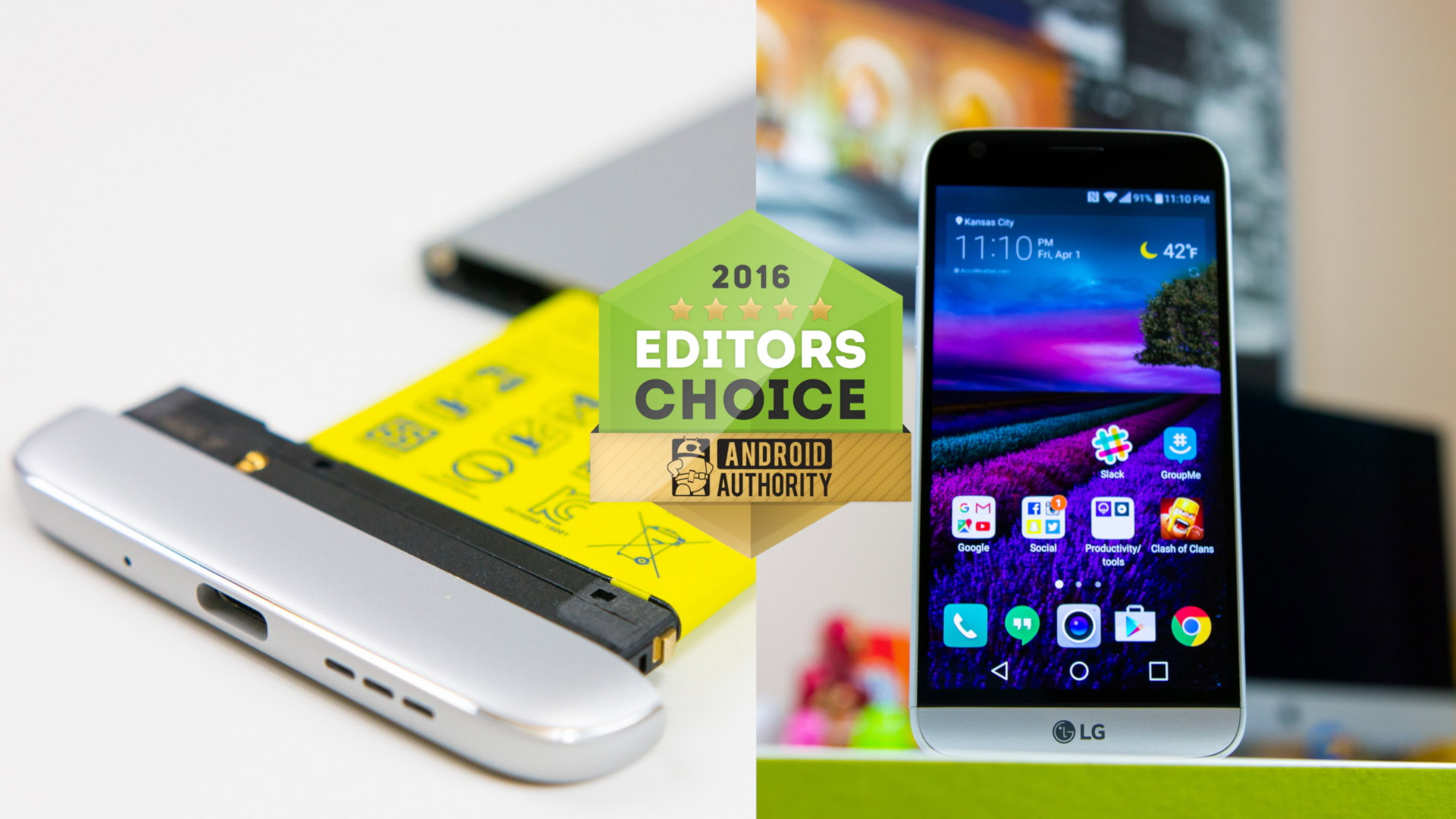
LG G5
What we like
What we don't like
Our scores
LG G5
After a few years of tweaking and perfecting its G-series design language, LG has torn up the rule book and breathed new life into the line with the LG G5. Dropping a plastic build for a metal frame and introducing a new modular concept, the LG G5 certainly has the potential to shake up the mobile market, but does it succeed?

Are modules the way forward for the smartphone industry; will LG’s big gamble on being unique pay off; and can the LG G5 pose a real threat to Samsung’s excellent Galaxy S7 and Galaxy S7 Edge smartphones? This is what we aim to find out – and more – in this full review of the LG G5.
Design
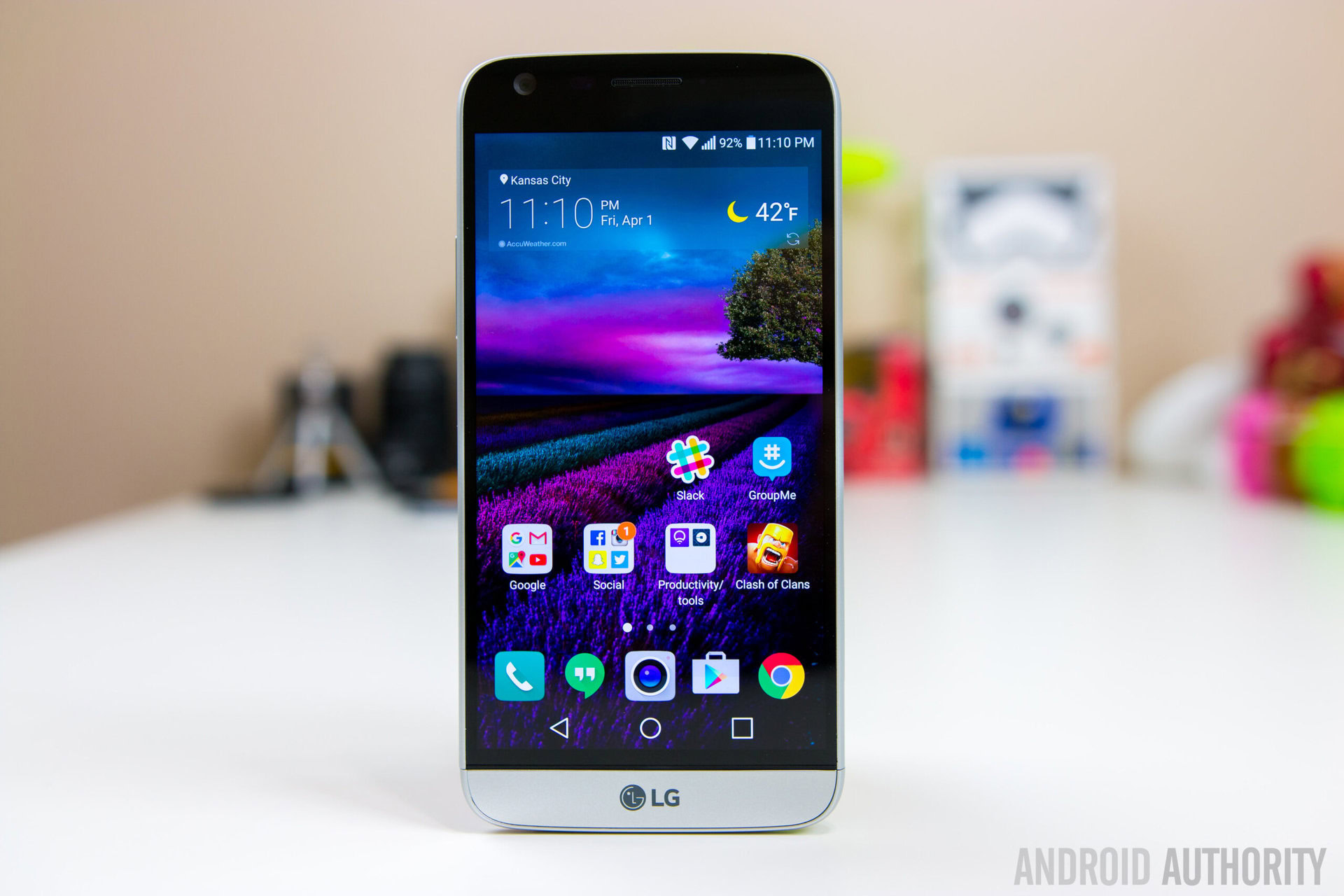
The LG G5 is the successor to last year’s G4 but as Lanh says, “it’s really nothing like it. For the most part, it’s an entirely different phone, and a lot of that has to do with the design.”
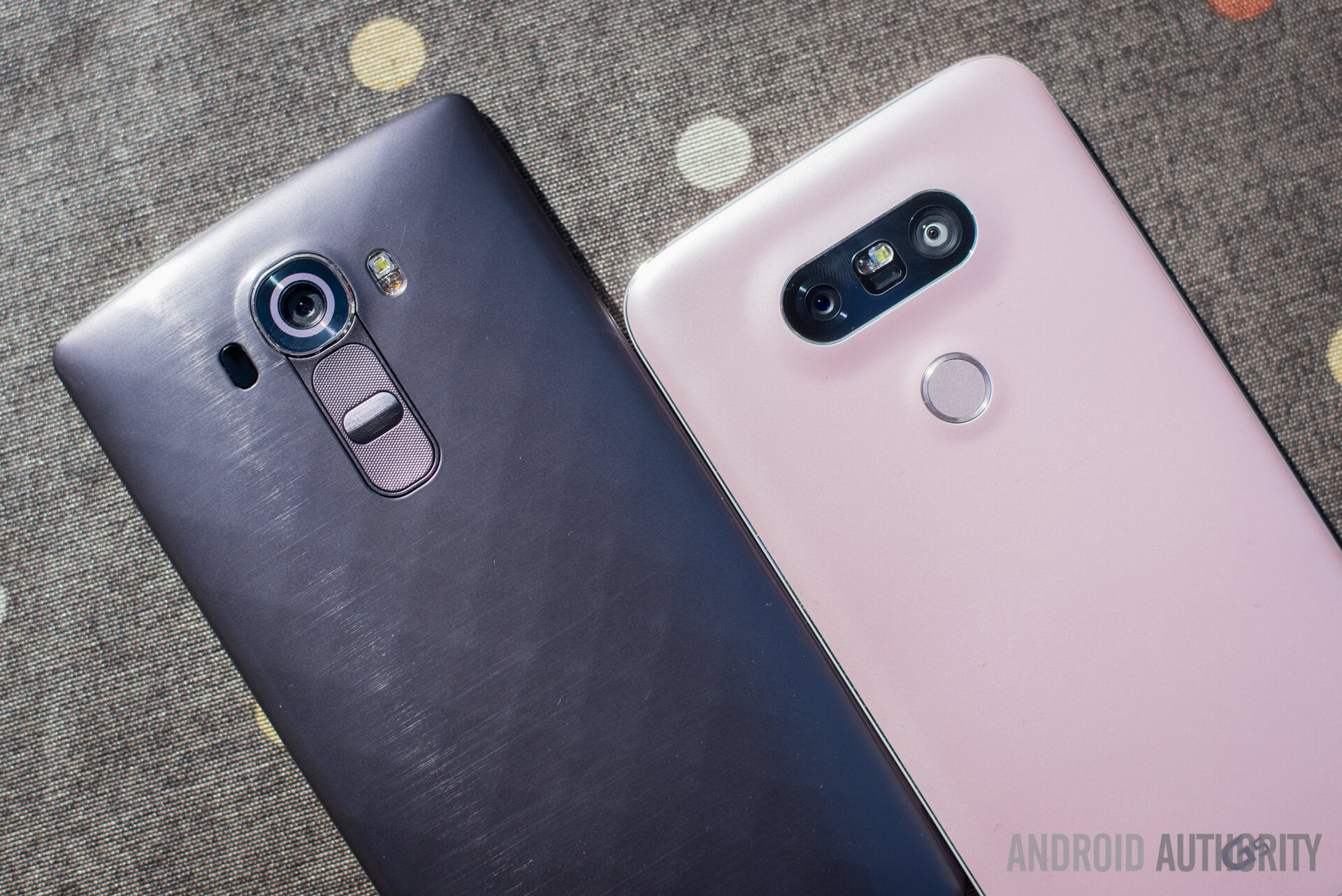
The differences between the LG G5 and the LG G4 are quite stark, with LG’s latest flagship bringing an aluminium build, but as we’ve heard recently, it’s not metal as you quite know it. Let’s clear up on thing first; the LG G5 is definitely made of metal, but it’s undergone a secret treatment process which essentially puts a layer of primer and paint on top of the body, similar to how a car gets painted. As a result, you aren’t directly touching metal, but it’s definitely a metal phone.
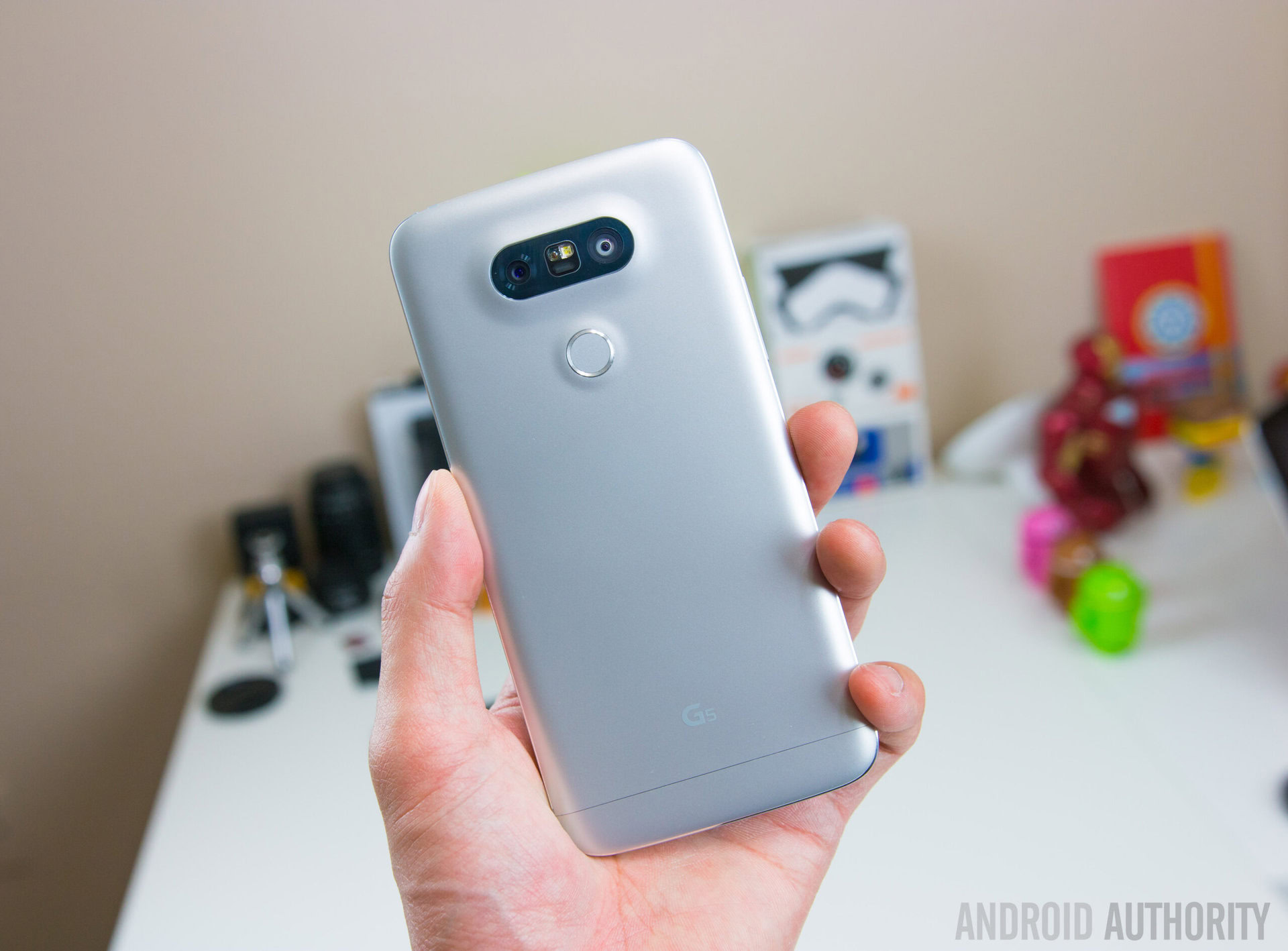
With most metal phones, they can feel quite cold in the morning or warm under heavy usage, but for the most part, the LG G5 is a constant temperature. LG’s approach to metal was certainly done with the best intentions in mind but as a result of the primer-paint approach, the handset doesn’t feel as premium or as solid as a metal phone traditionally does. I’d have to agree with Lanh, when he says that:
It’s kind of like having a metal phone inside of a protective case and it’s just something you have to wrap your head around when holding the G5
Materials aside, the rest of of the G5 is built well and the reduction in screen size over last year’s LG G4 means it’s more ergonomically friendly and comfortable to hold in the hand. I personally think the 5.3-inch form factor is perfect for a smartphone and LG may have uncovered the perfect size. At 159 grams, the LG G5 also has considerable weight to it, but given the lack of premium feel to the body, the hefty weight actually improves the in-hand experience and makes the smartphone feel more solid.
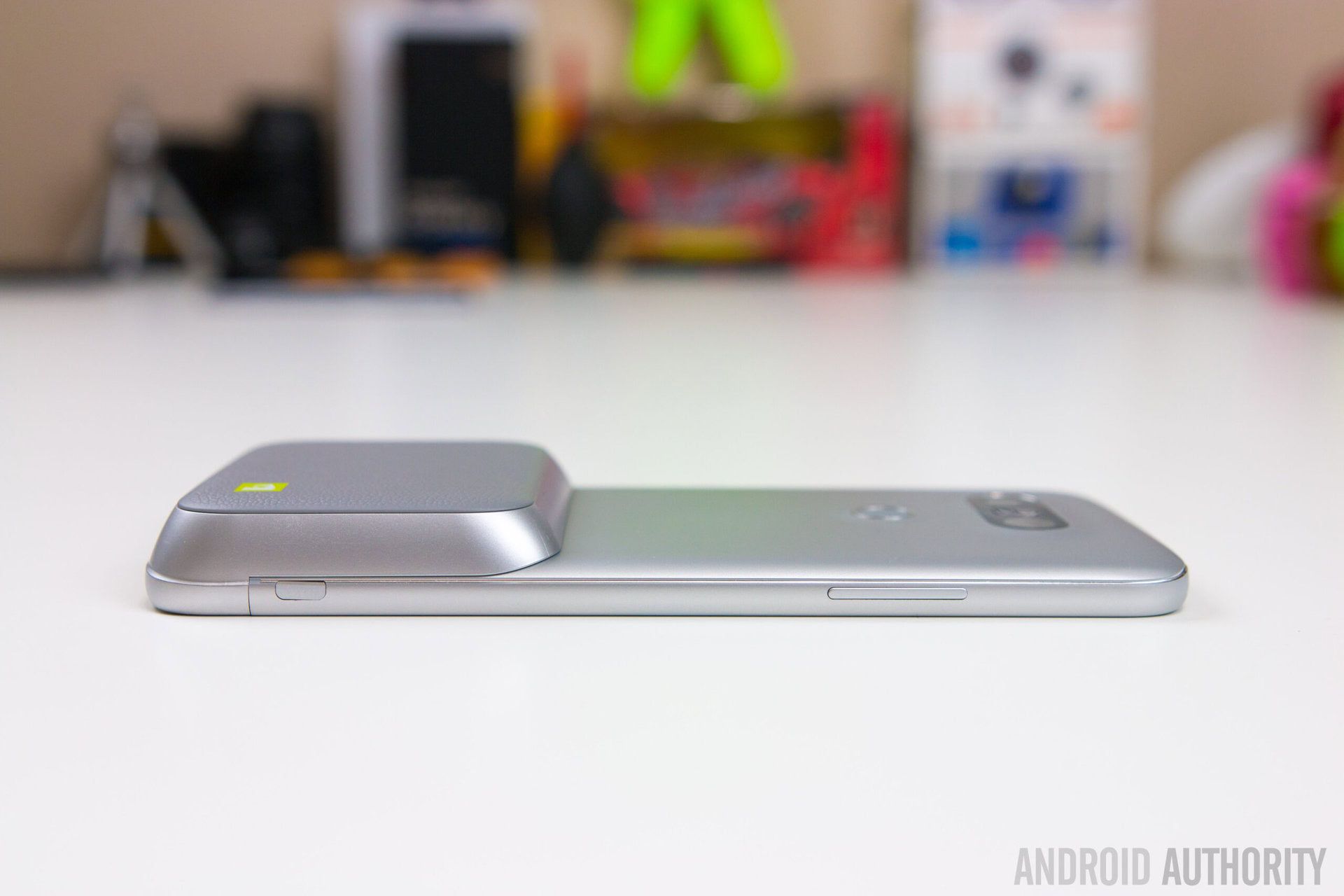
If you’ve used an LG G-series smartphone before, the button layout on the LG G5 will take some getting used to; since the G2, LG’s flagships have had the volume and power keys on the rear, but with the G5, the volume buttons have now switched to the left of the handset. If you’re someone who holds a phone in their right hand, the position of the volume keys on the left is quite uncomfortable, and, as they’re almost flush with the edge of the phone, they are difficult to locate at the best of times.
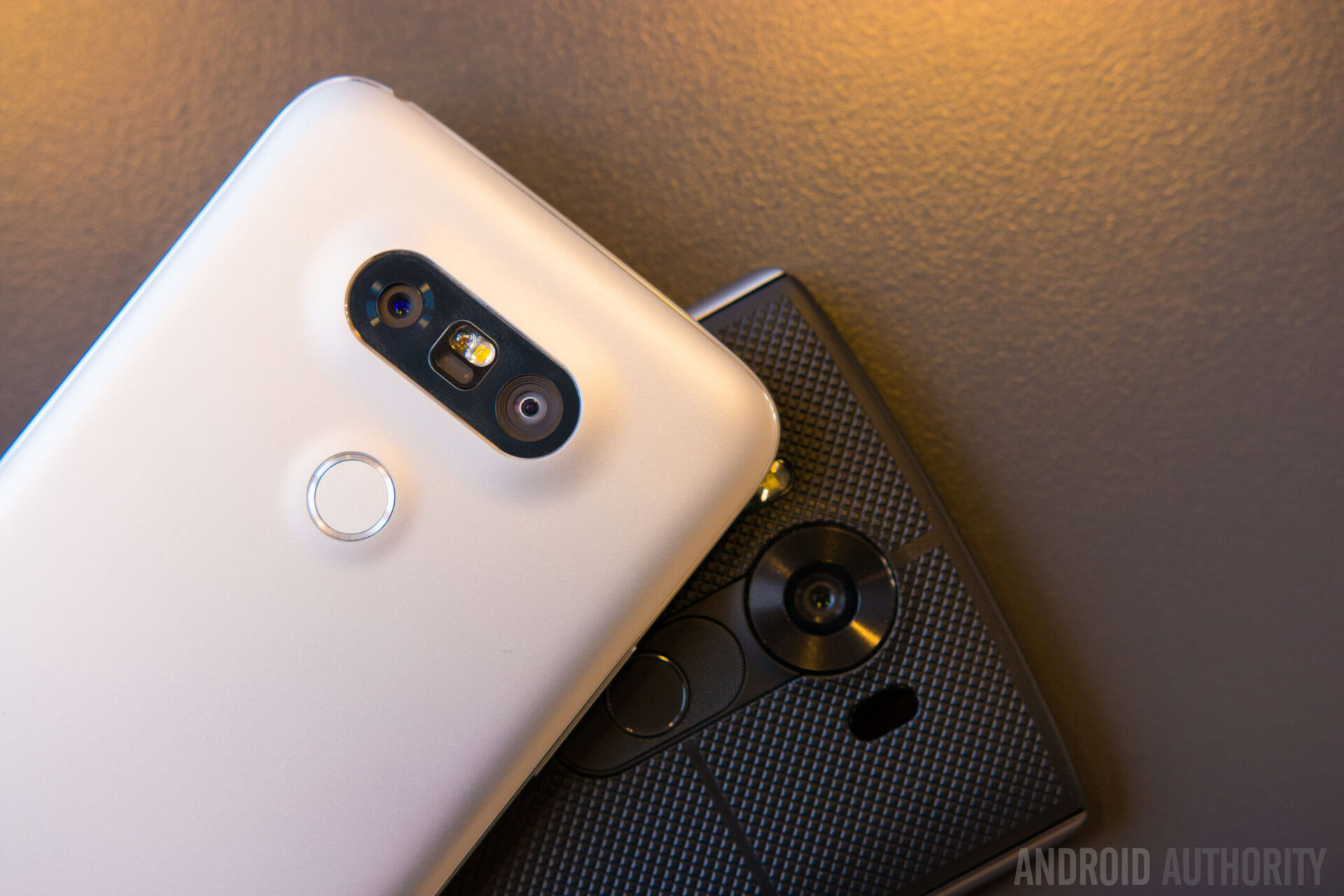
The rear still sports a power button – with embedded fingerprint sensor – and the power button itself is a disappointment, as it feels uneven and doesn’t offer reassuring feedback when pressed. Having used the power key with fingerprint sensor on the back of the LG V10, the less-than-premium power key on the G5 is definitely a let down.
One of the better single speakers on a smartphone in a long while
On the bottom, LG has made the switch to the newer USB Type-C standard, which is widely becoming the norm for flagship devices this year. Alongside this is the microphone and single bottom-firing speaker, and the latter is surprisingly impressive for a single mono speaker. Lanh sums it up best when he says it is one of the better single speakers he’s heard on a smartphone in a long while.
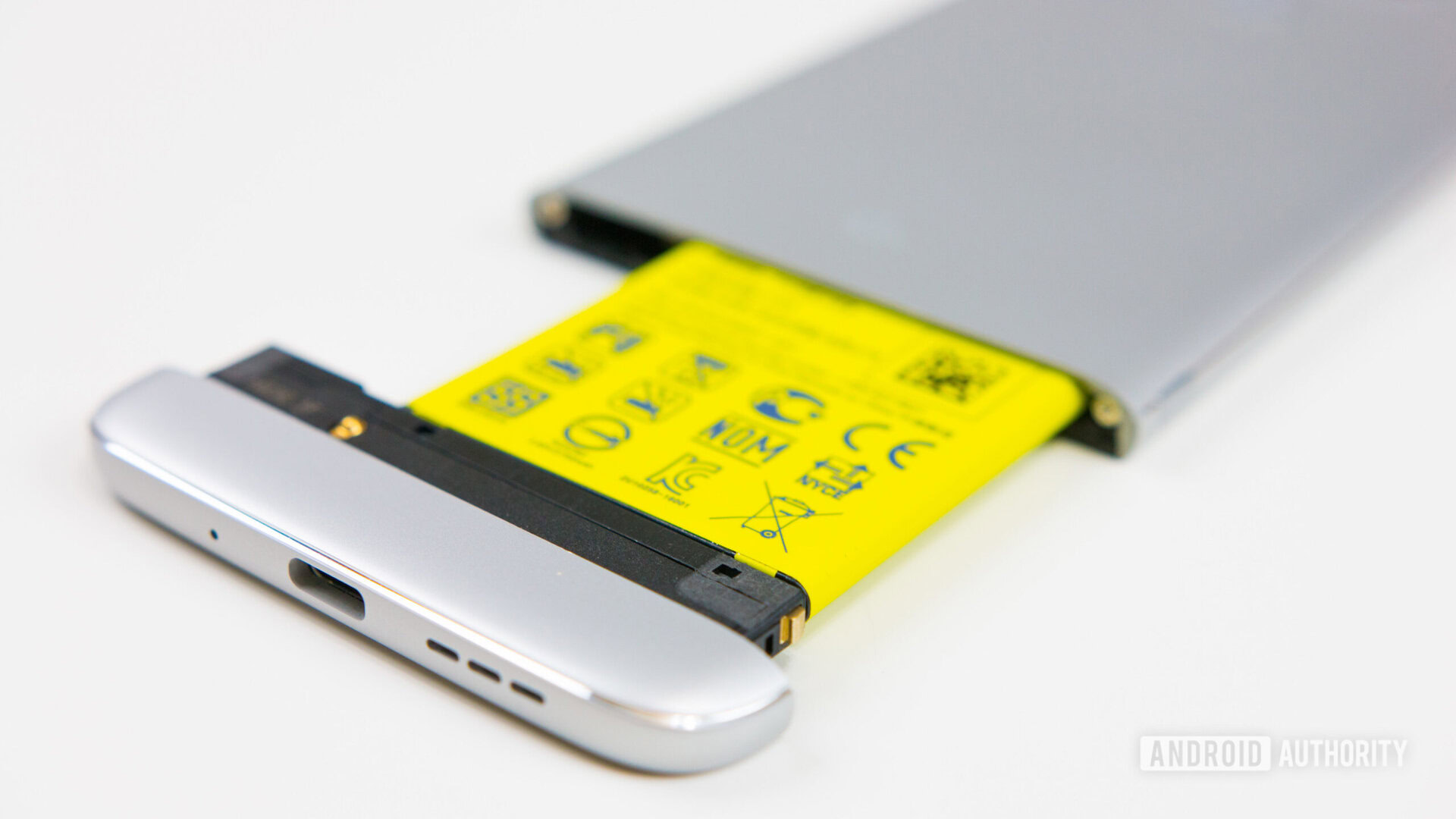
Overall, the LG G5 definitely isn’t going to win any awards for the way it looks but this smartphone is more about substance over style. LG has managed to combine microSD card expansion and a removable battery while keeping a metal unibody, and the presence of a recessed button to remove the bottom chin allows you to swap and remove batteries with ease. The bottom chin is also one of the most compelling reasons to buy the LG G5, as it makes the G5 the first modular smartphone to hit the market, and this is what makes the phone’s experience so compelling.
LG has some new Friends
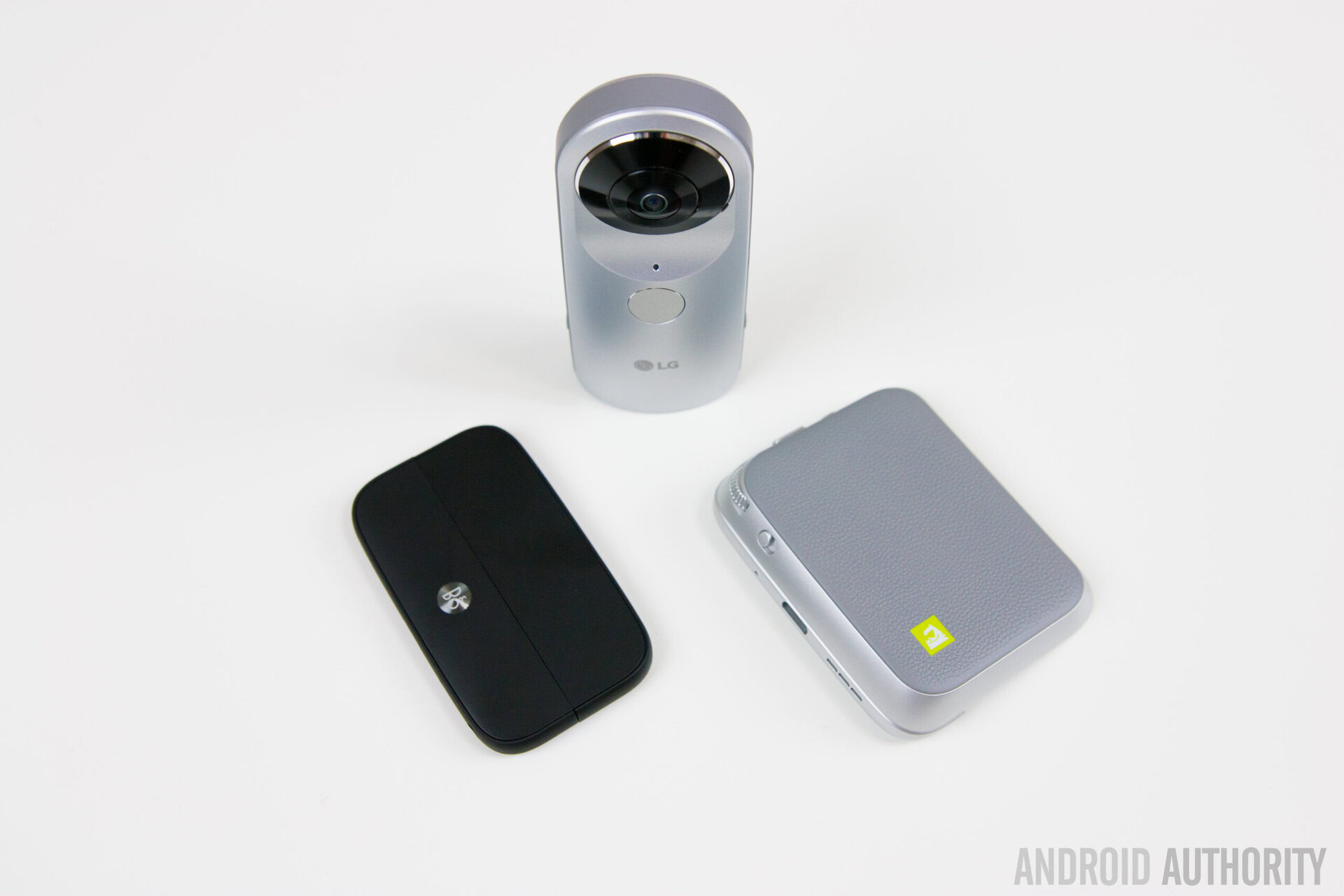
Alongside the G5, LG is announcing new “Friends” that work with the smartphone; while some of these actually connect to the device, others don’t and this is why LG kept to the Friends name (instead of calling them modules).
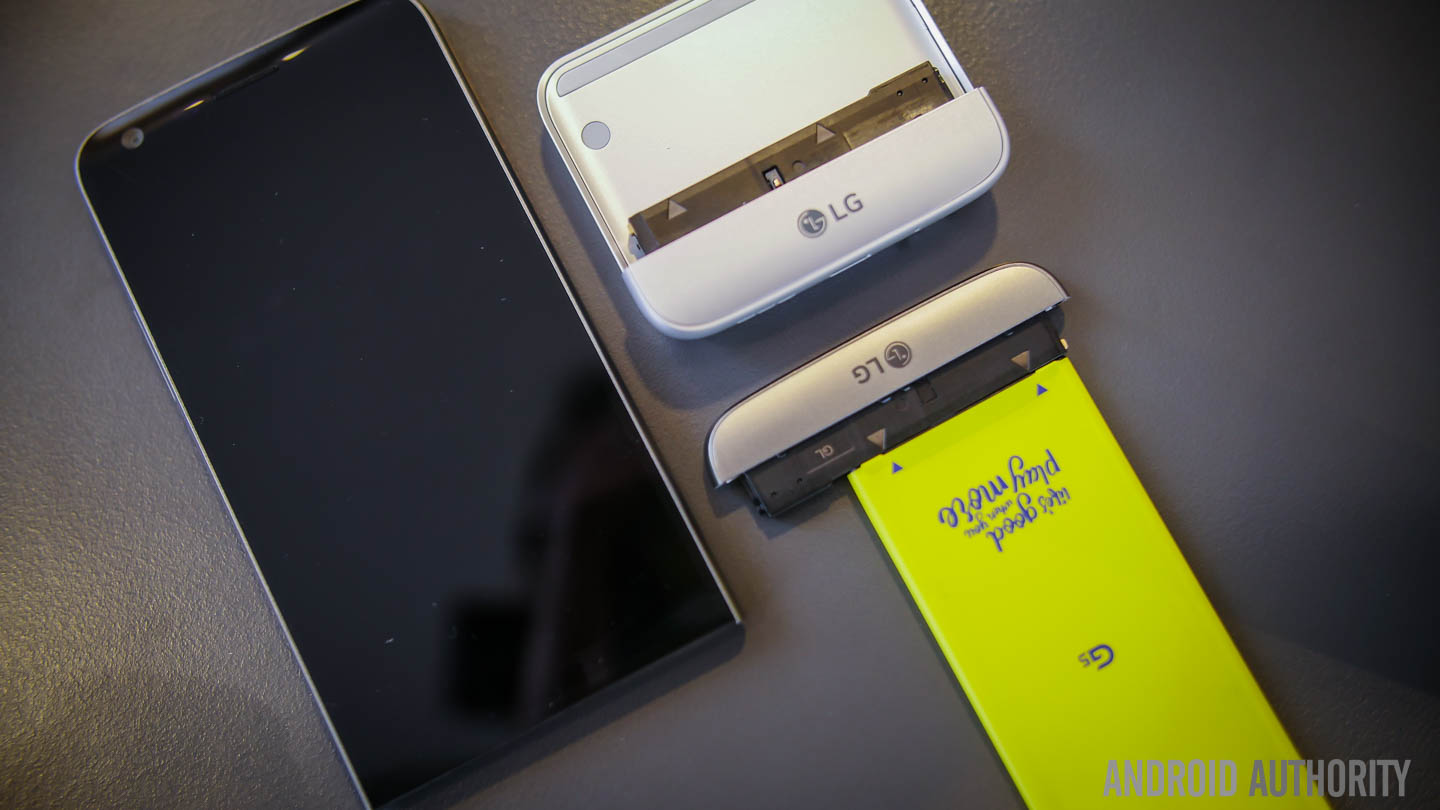
LG has developed a few friends for its new flagship, but is also opening the concept and allowing third parties to get creative with module designs. Of the modules that actually connect to the smartphone, there’s only two available and these are the LG Cam Plus and the LG Hi-Fi Plus with B&O Play.
The LG Cam Plus is the company’s camera grip, which provides welcome physical controls for launching the camera, taking a photo, video, zooming in and out of an image and recording video. The Cam Plus also packs an additional 1,200mAh battery, which can keep your phone topped up – when the phone is not being used that is – and the only real downside is the bulk it adds to the G5, which makes it uncomfortable to use as an actual phone.
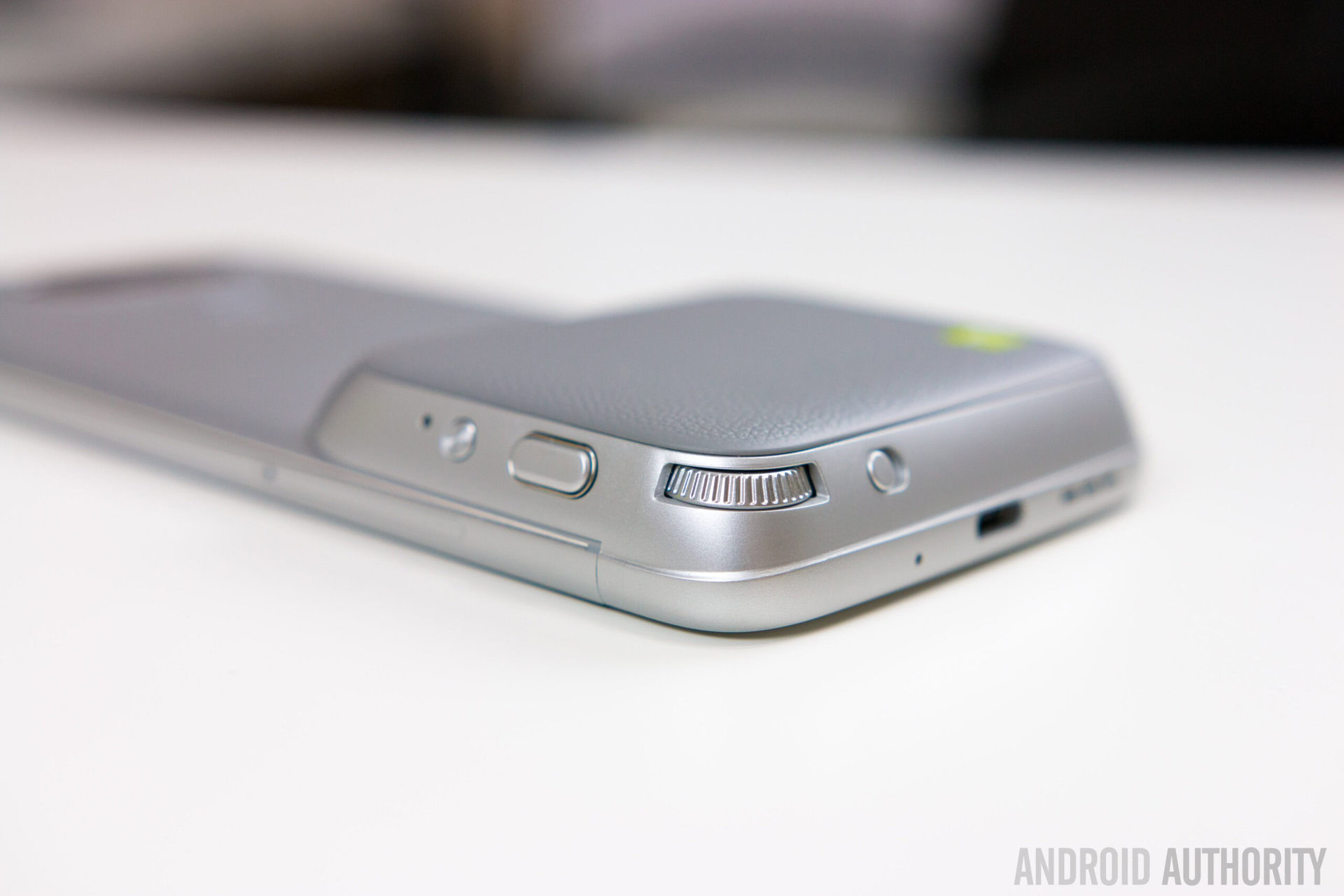
Personally, I also think it’s very counter-intuitive that LG created a separate switch to launch the camera, rather than allow you to launch the camera by pressing the shutter button, but this is just a personal gripe with the design. For most people, once you realise the switch allows you to quickly launch the camera, you’ll find this is what you instinctively reach for when you pull the G5 and Cam Plus out of your pocket.
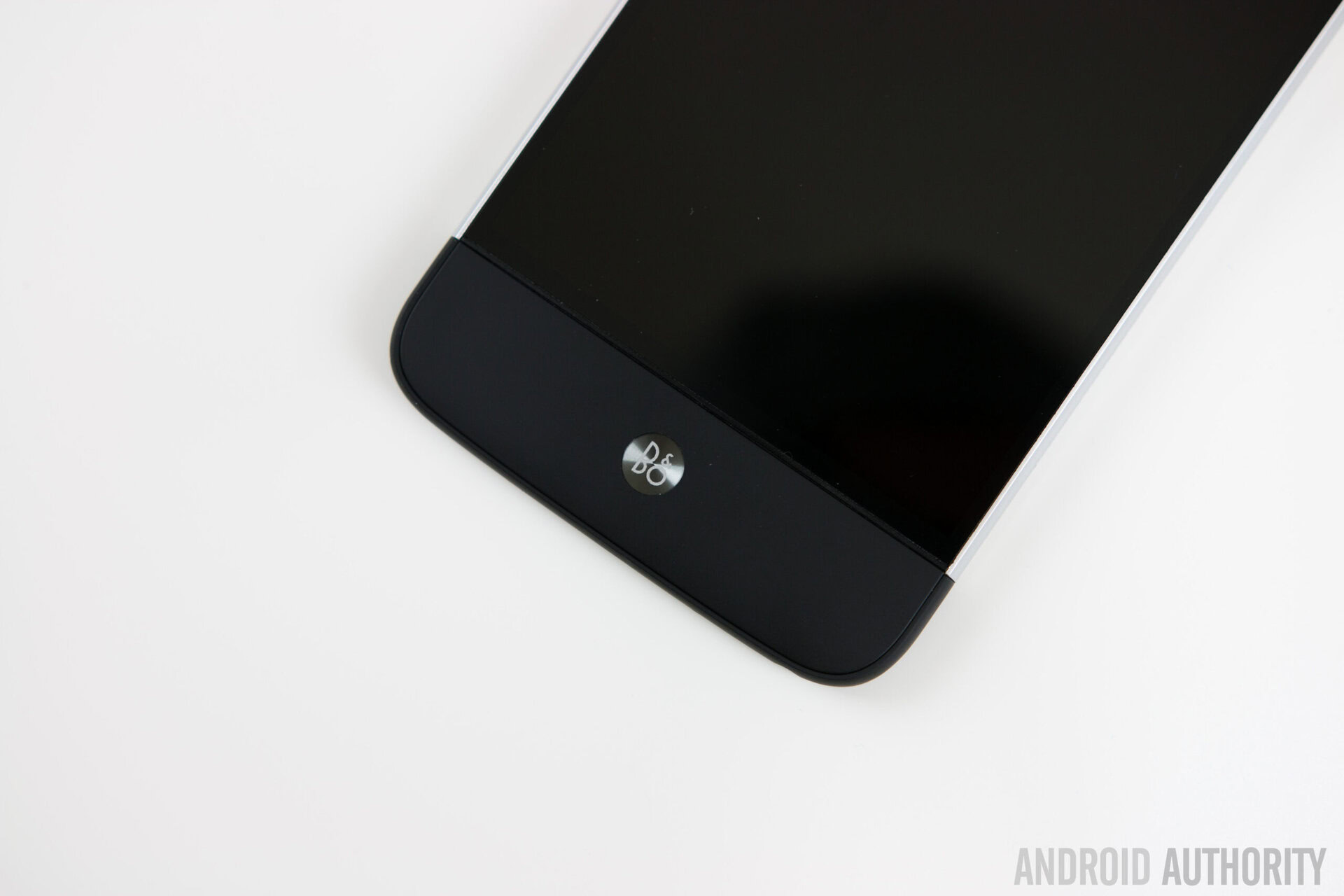
The LG Hi-Fi Plus is an entirely different type of module as it appeals very much to audiophiles and music lovers. Developed in partnership with Bang & Olufsen, the Hi-Fi Plus is a 32-bit DAC and headphone amp, which features an ES9028C2M + Sabre9602 chipset for supporting music up to 384KHz. The DAC features its own headphone jack (in addition to the regular one at the top of the phone), its own speaker and the USB Type-C charging port and can also be used as a standalone DAC when not being used with the G5. The 24-bit audio experience on the LG G5 is already quite impressive, and the Hi-Fi Plus serves to improve this further, offering additional space, clarity and detail to the sound.
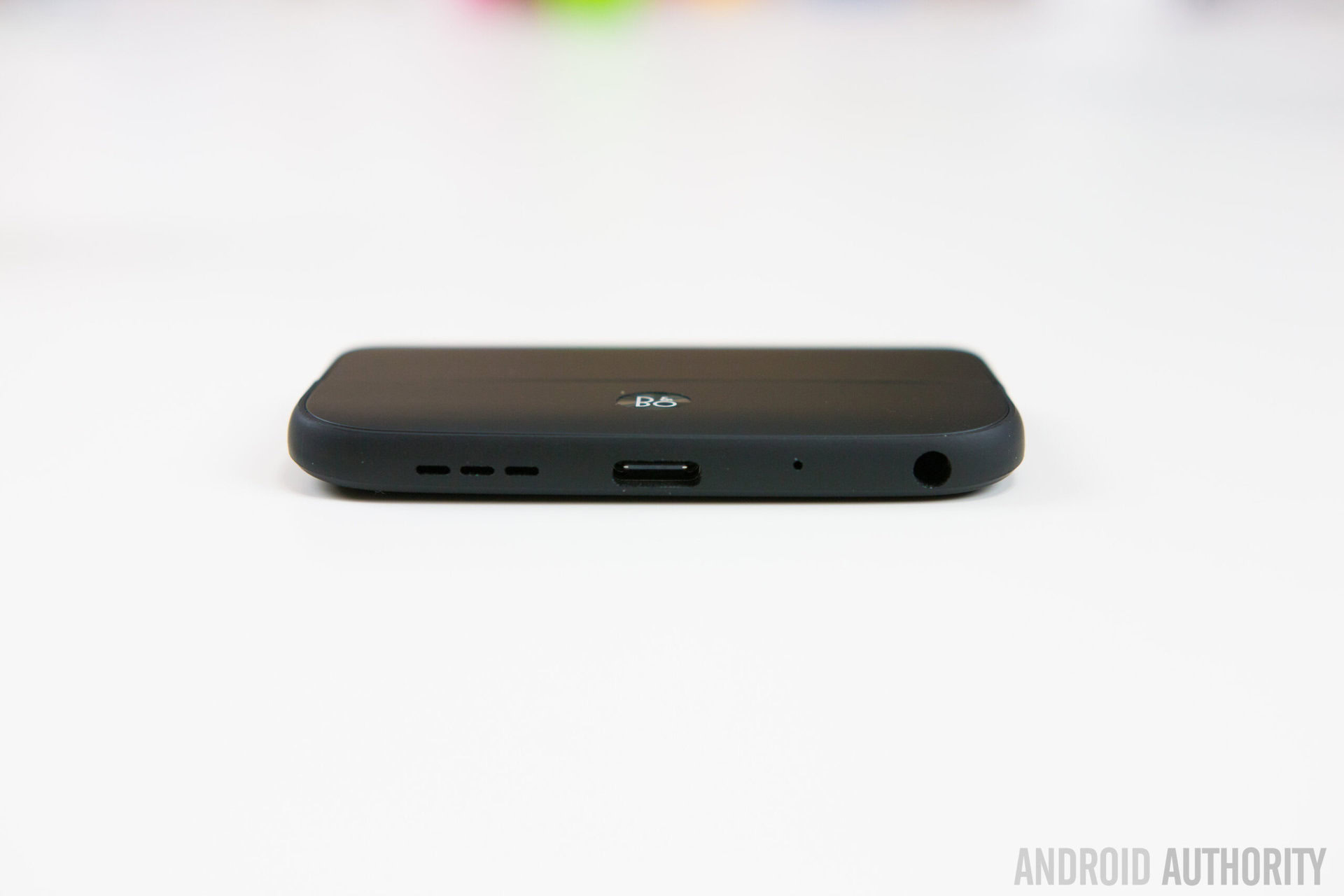
Before you get too excited about the Hi-Fi DAC though, it’s not going to work with G5 smartphones sold in Korea, Canada, Puerto Rico or the USA; LG declined to comment on why it won’t work with these devices (and why listings were pulled in the US), but it’s worth keeping this in mind if you planned to buy the G5 in one of these markets and wanted to buy the Hi-Fi Plus.
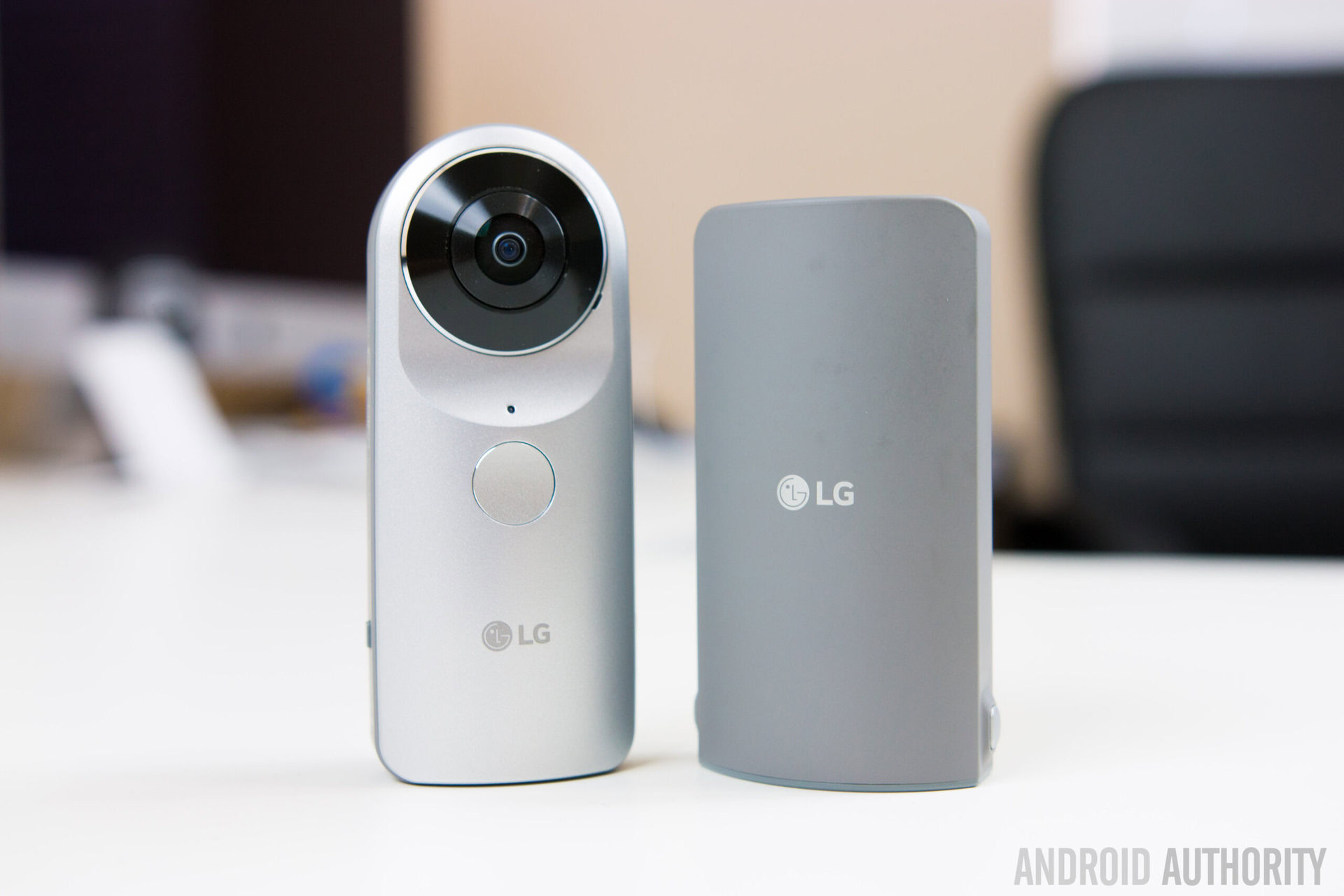
LG’s other friends for the G5 include a tethered Virtual Reality headset – which is lightweight and comfortable as it connects to your smartphone using the USB Type-C port – and the Cam 360. LG’s first foray into 360° cameras has delivered a stylish friend with two 180° cameras capable of capturing 16MP 360° photos or 360° video in Quad HD (2K) resolution.
Overall, the concept of a modular smartphone certainly isn’t new – Project Ara anyone? – but LG has made considerable attempts to develop modules that are genuinely useful to customers. The availability may be scarce but with third parties also able to develop friends for LG’s new smartphone, it won’t be long before the available range is considerably larger.
Display
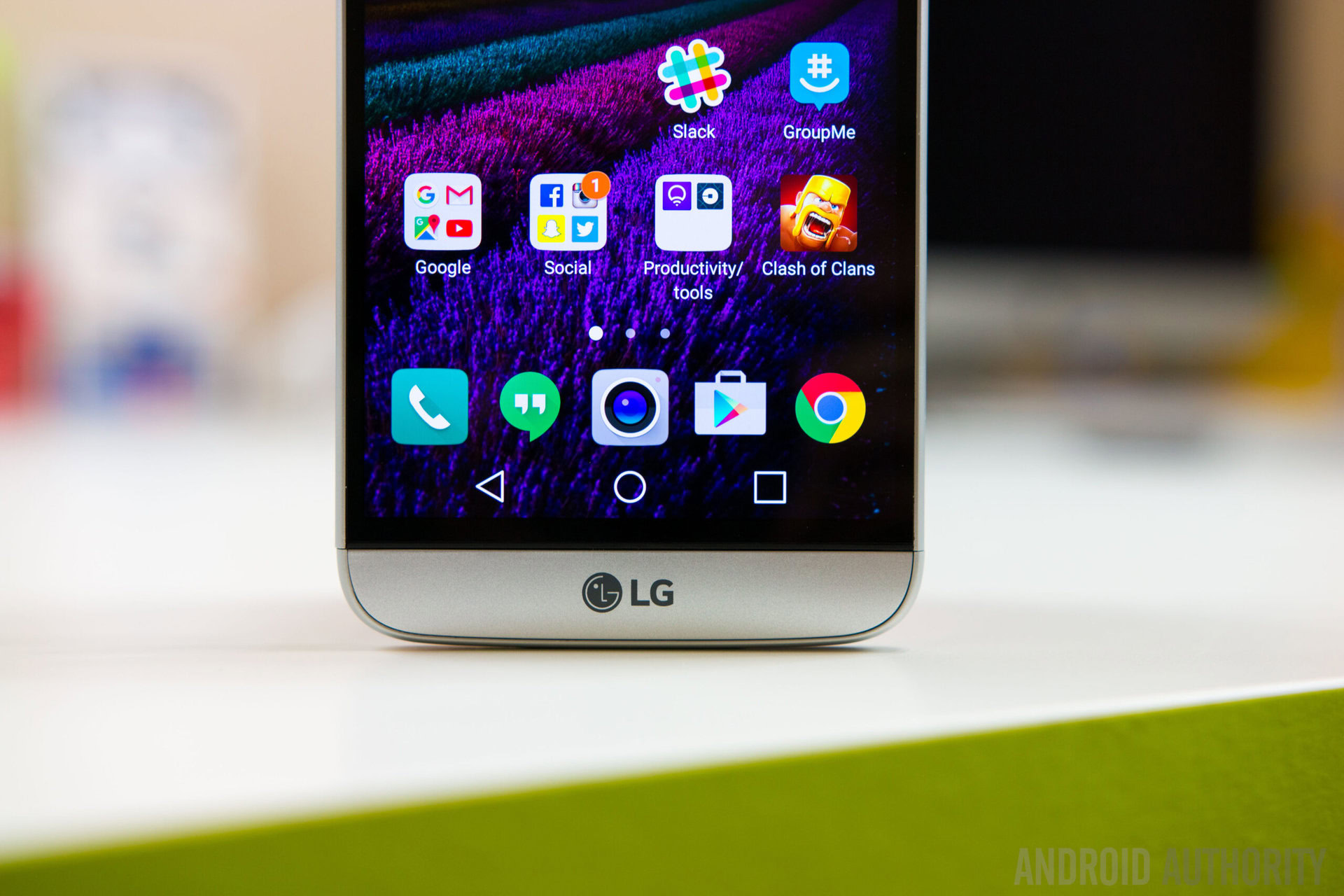
As mentioned above, LG has made the G5’s display smaller than previous years, but kept the same QHD (2560 x 1440 pixels) resolution as the G4. As a result, the display offers a slightly sharper experience (no doubt thanks to the increase in pixel density from the smaller display). Overall, the display is typical of that found on LG’s devices and, despite the smaller size, it’s more than large enough to offer an enjoyable experience when watching movies or playing games.
2016 seems to be a race for OEMs to create Always On displays and LG is no different, evolving the second screen concept from the V10 into a more mainstream always on screen on the G5. As seems to be the way with most smartphones, the always on display isn’t necessarily the most useful as it can show you the clock, incoming notifications (albeit quite badly), a signature or a random message.
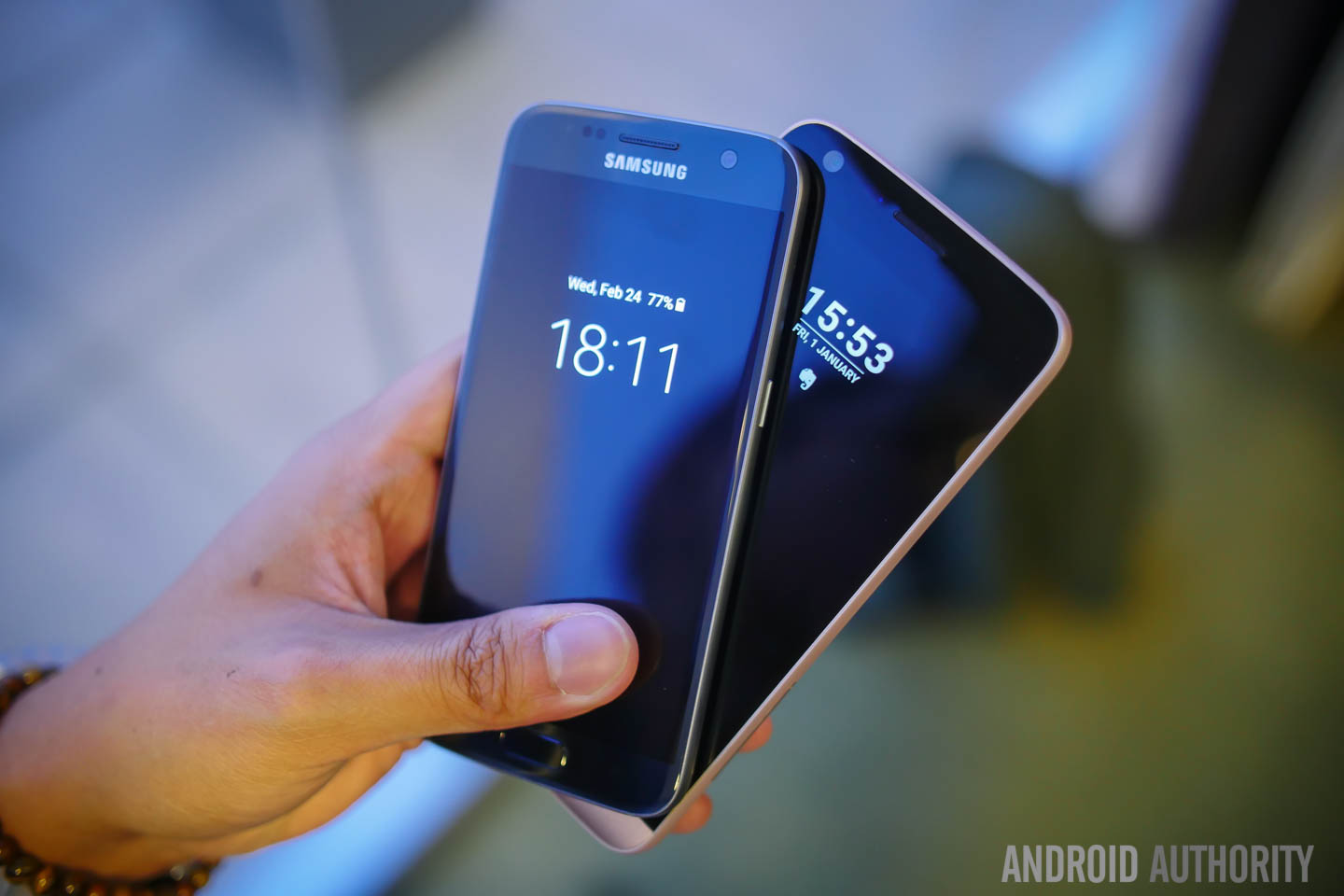
LG’s decision to go with LCD technology over AMOLED does affect the always on display as it’s quite dim and completely illegible in bright sunlight. No doubt, LG has had to tone down the brightness in order to help conserve battery life, but it does mean the Always On display is less useful than it could have been, had LG opted for a different display technology.
Overall, the G5’s display is certainly impressive and offers great color reproduction and vibrant colors, that aren’t oversaturated. Yes, it’s not an AMOLED display so colors don’t pop quite as much as they do on other devices but overall, it’s difficult to fault what is, otherwise, a more than capable smartphone screen.
Performance & Hardware
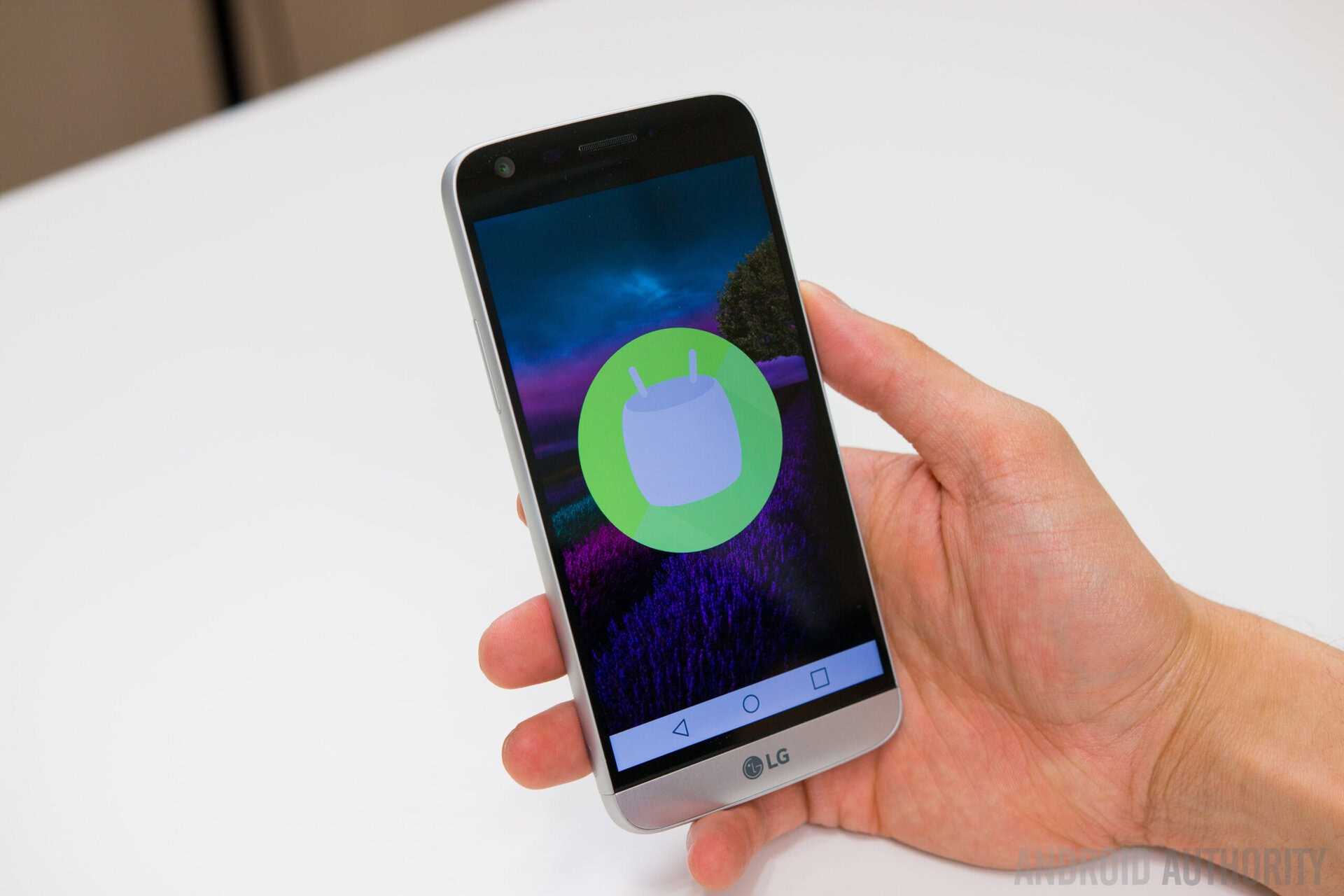
As LG’s first flagship of the year, it’s safe to expect the latest and greatest specs and LG certainly hasn’t disappointed in this department. Inside the G5, it’s got the Snapdragon 820, Adreno 530 GPU and 4GB RAM, which combine to offer a really snappy experience, with no visible signs of lag anywhere in the UX.
Probably one of the smoothest smartphones that LG has ever put out
From buttery smooth animations, to rapid multitasking and gaming like a pro, the G5 is definitely more than capable at handling whatever you throw at it. Aside from occasionally getting slightly warm (which is not a criticism), the G5 proves to be a very capable contender and offers an experience that rivals the best on the market. In fact, both Lanh and I agree that it’s probably one of the smoothest smartphones that LG has ever put out.
Benchmarks
Of course, the in-hand experience is only one part of it, so how does the G5’s SoC setup stack up to other devices, in particular this year’s flagship Galaxy S7 family? Let’s take a look:
Starting with GeekBench 3, the LG G5 scores a very respectable single core score of 2252 and a multi core score of 5215. How does this fare to the competition? Well, this is slightly lower than both the Snapdragon powered version of the Galaxy S7 Edge, which achieved scores of 2318 and 5452, and the Exynos powered Galaxy S7 Edge, which achieved scores of 2107 and 6397.
Moving onto another CPU test and this time, AnTuTu reveals some quite interesting results, with the G5 ranking higher than the Galaxy S7 Edge which achieved a maximum score of 127938 in our testing. Despite only being a quad-core unit (comprised of two dual core processors), the Snapdragon 820 is proving to be one of the most capable chipsets on the market.
Our final benchmark took us to 3DMark to run the SlingShot test on the Adreno 530 GPU inside the LG G5. In this test, the G5 achieves a score of 2447, which is slightly lower than the 2528 score achieved by the Snapdragon-powered Galaxy S7, but miles ahead of almost every smartphone currently on the market.
The rest of the hardware
From benchmarks to the rest of the hardware and there’s no denying that LG has managed to include everything you could ask for in a smartphone.
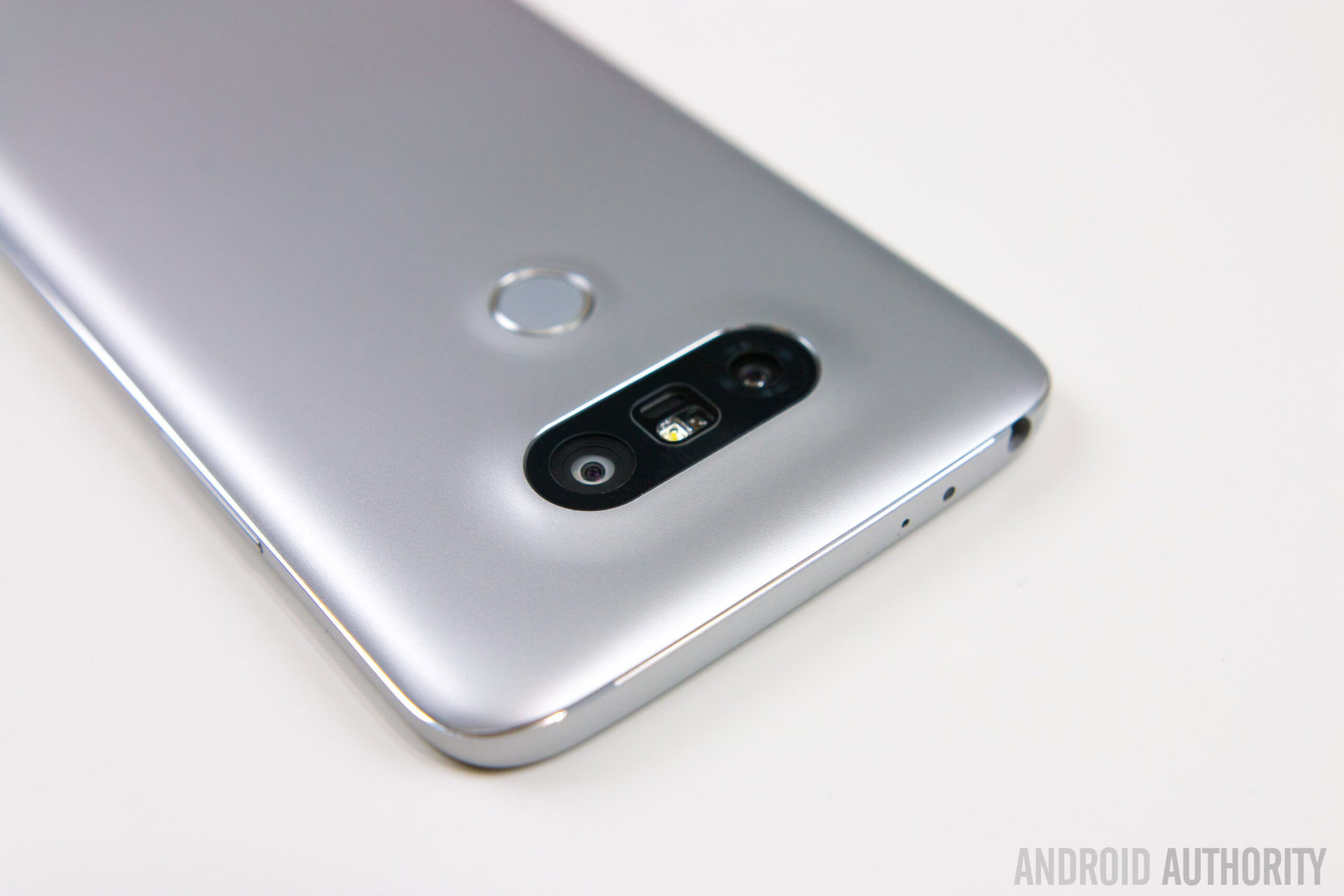
The fingerprint sensor is embedded within the rear power button and while the button doesn’t feel as premium as on past LG devices, the fingerprint sensor is one of the best on a smartphone. Inspired by the Nexus 5X, it requires 5 to 6 taps to set up and unlike other smartphones, you don’t actually have to press the power button in order for it to read your fingerprint. Just tapping your finger on the sensor is enough to unlock and it does so, quickly and accurately. On a couple of occasions, I’ve had an error saying fingerprints can’t be used (and to use my alternate security method), but this seems to be a local issue as Lanh (and several others) haven’t experienced this.
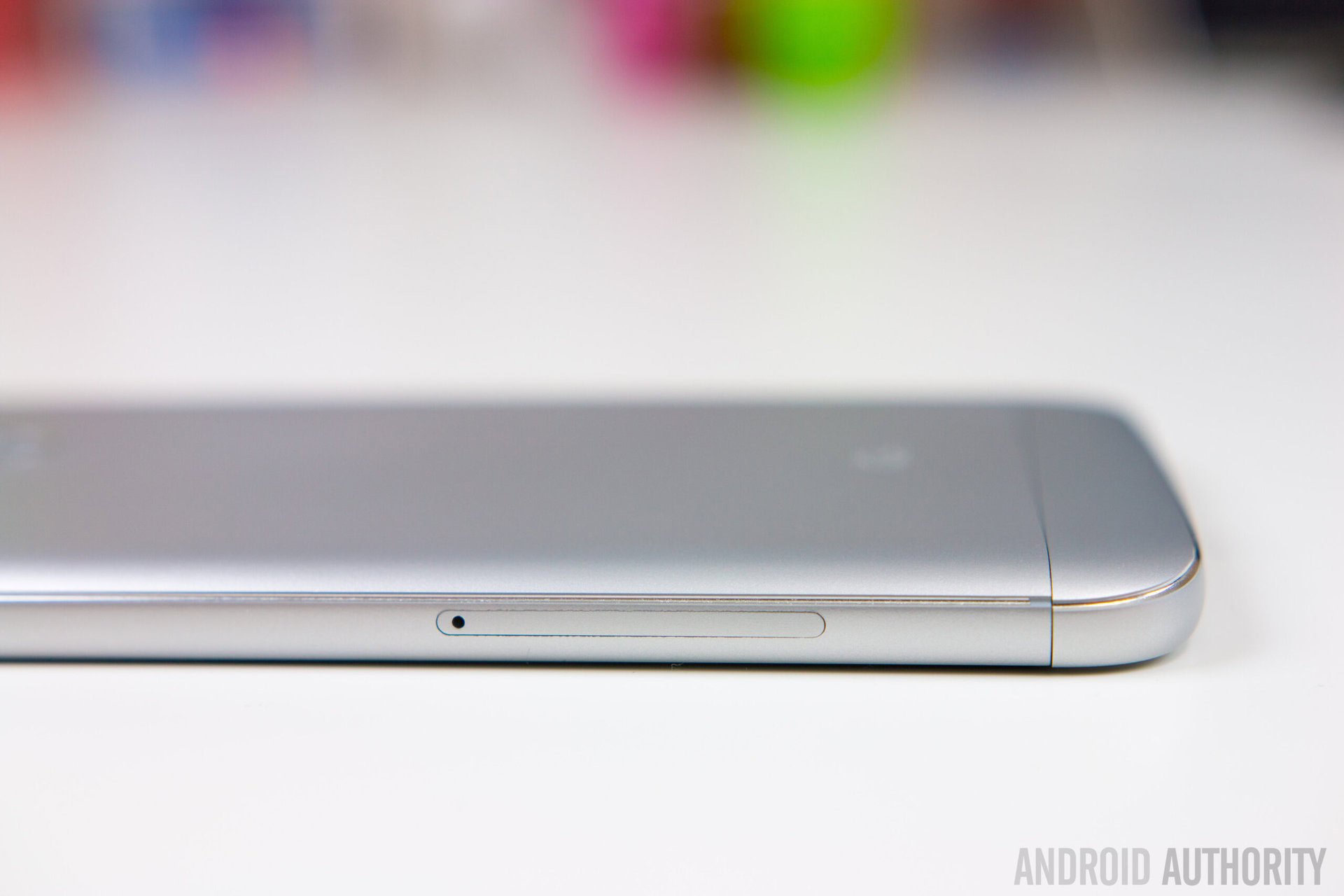
Under the hood, the G5 comes equipped with 32GB internal storage, which can be expanded further by up to 200GB using a microSD card. LG definitely deserves credit for sticking to its guns about both microSD card expansion and a removable battery, and for LG loyalists who need expansion, the G5 definitely doesn’t disappoint.
Connectivity-wise, the G5 also doesn’t disappoint as it comes equipped with a selection of LTE bands (which depend on the model you buy) that can support Cat 9 speeds (450Mbps download, 50Mbps upload), Bluetooth 4.2, NFC, an infrared port and a selection of sensors to measure and track almost anything. The use of USB Type-C can be a pain if you already have a collection of microUSB accessories but, with the industry moving towards this next-generation standard, it’s nice to see that LG has managed to future proof its latest handset.
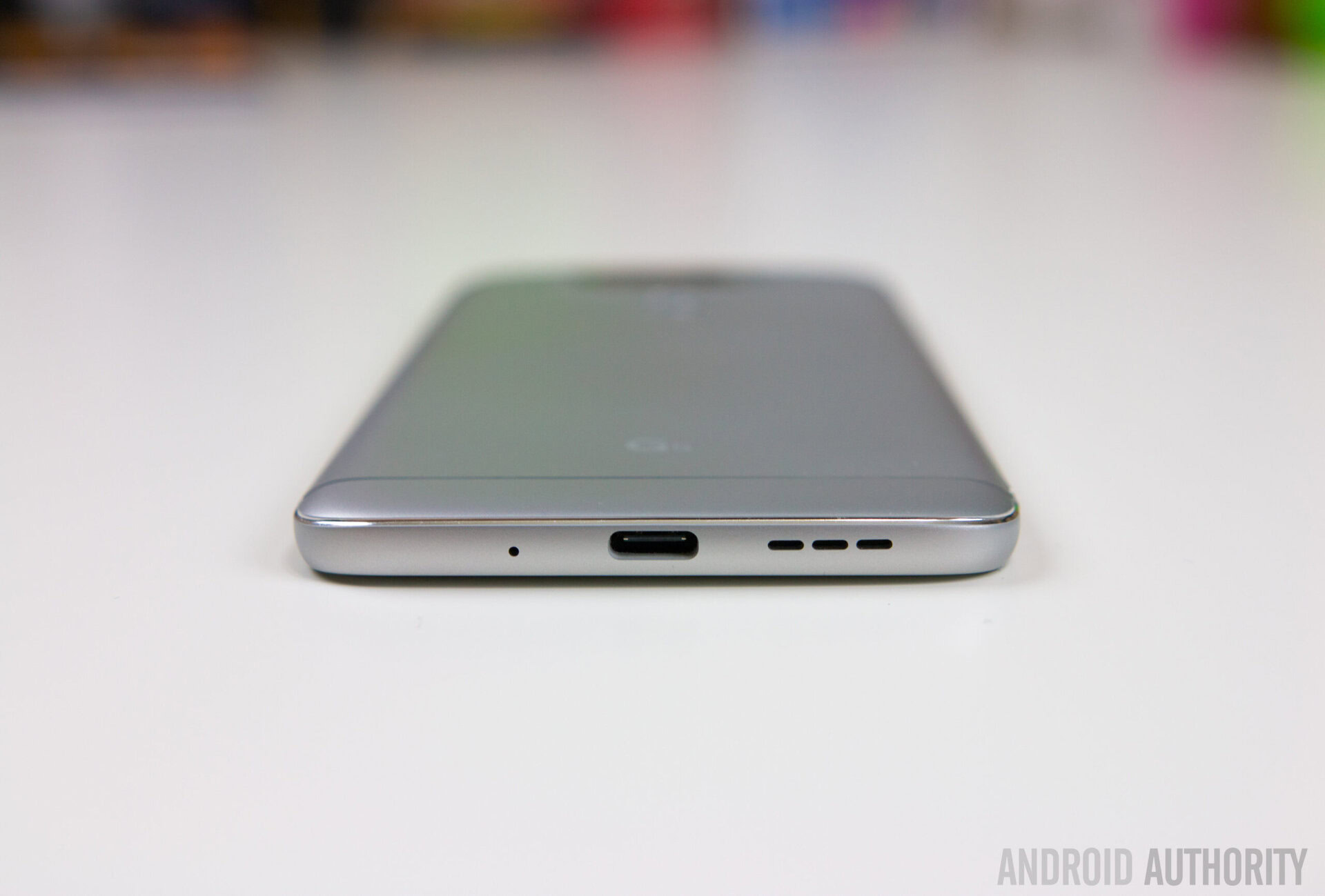
It’s likely that some people may have been concerned with the G5’s single bottom firing speaker but we can safely say that there’s nothing to worry about. While it doesn’t offer the quality of dual stereo front facing speakers, the speaker is mighty impressive for a single firing speaker.
Overall, buying a flagship smartphone usually means you get flagship specs with it and the G5 doesn’t disappoint in the performance & hardware stakes. Combining the very latest internals with an optimised software experience has allowed LG to deliver one of the smoothest smartphone experiences it has ever offered on a mobile device.
Battery Life
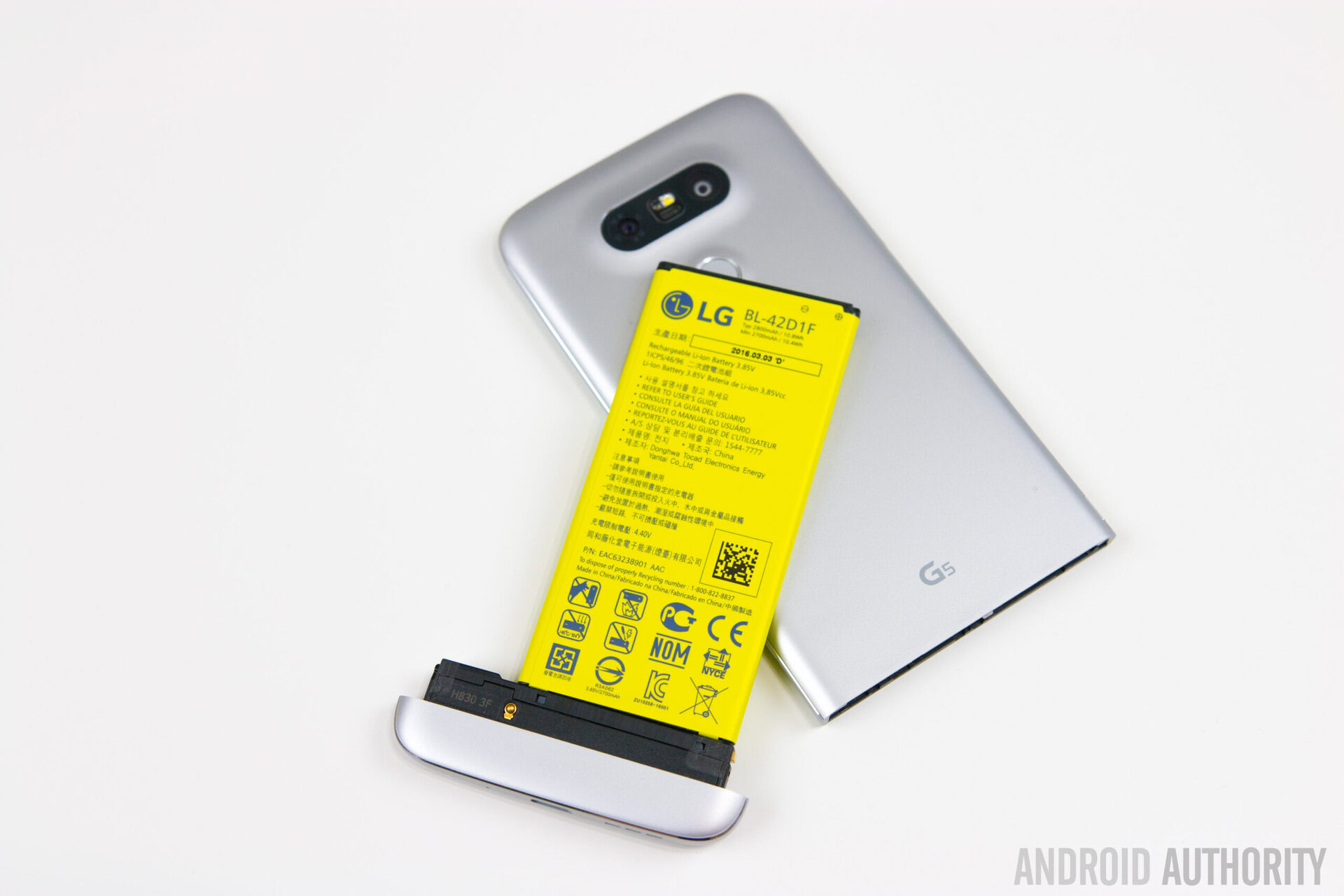
Of course, battery life is where many smartphones can stumble, but how does the removable battery inside the LG G5 stack up to the ever increasing demands of smartphone users?
While most flagships seem to sport 3000mAh batteries or larger, the cell inside the G5 is a smaller-yet-equally-capable 2800mAh battery. For the most part, the LG G5 is capable of getting you through a whole day’s usage, although actual screen on time seems to range between 3 and 4 hours. By way of comparison, the 3000mAh unit inside the Galaxy S7 lasts an hour or so longer off a single charge but the G5 does have one standout feature that sets it apart from the competition.
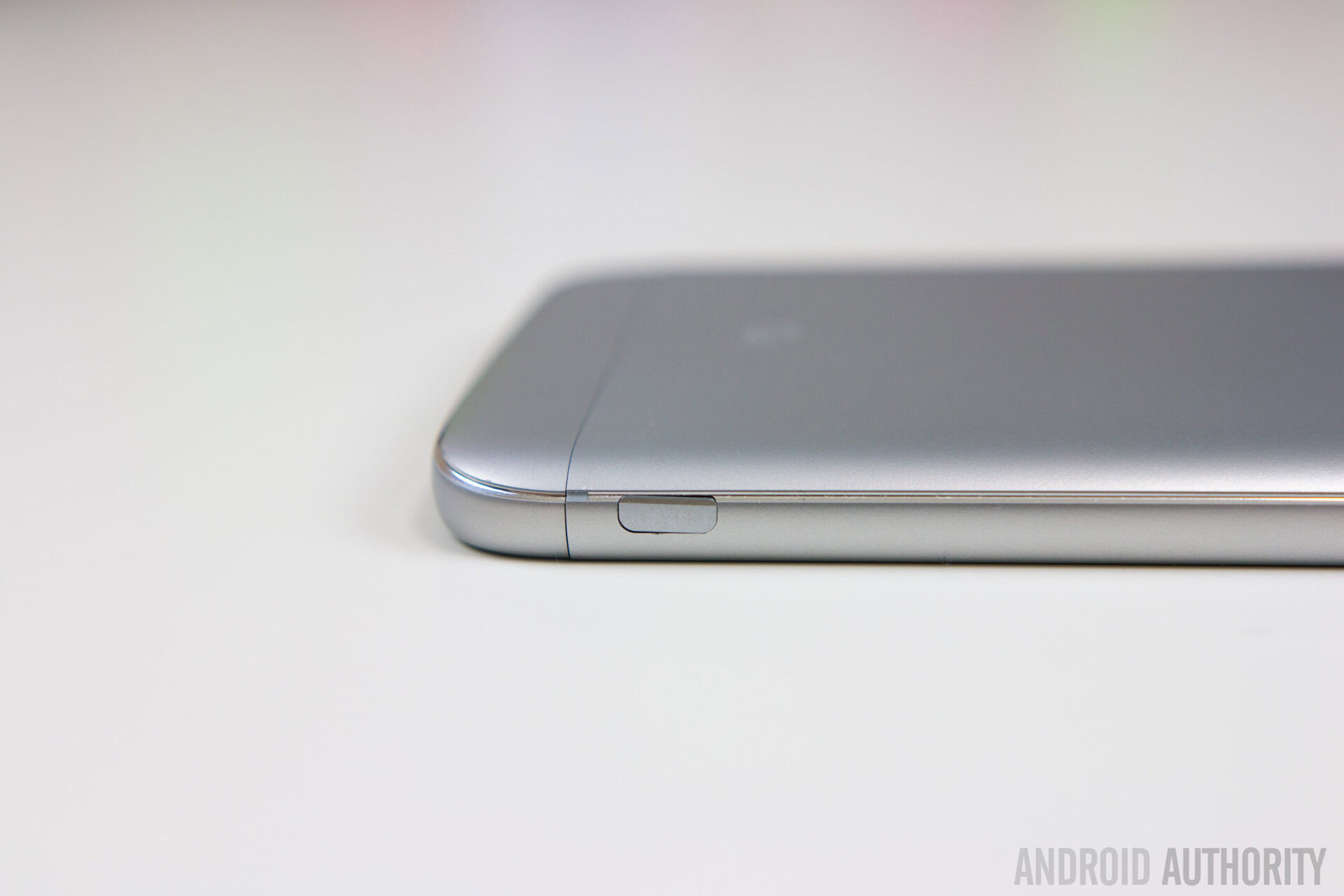
Accessed via a recessed button that unclips the bottom chin, the removable battery is a particularly good feature to have on a modern flagship. In a market where companies are moving away from removable batteries, LG has shown it is possible to switch to a metal unibody and still allow users to remove and swap the battery. After all, the beauty of mobile phones is the ability to be free from a tethered cable, and if you have to keep charging your phone, is it truly mobile?
LG hasn’t revealed when official spare/replacement batteries will be available so if you find yourself running out of juice, you’ll be happy to know that Quick Charge 3.0 is also present on the G5. The G5 charges to full in 1 hour and 19 minutes and you can charge to 50 percent in just 27 minutes.
Overall the LG G5 battery life is certainly more than satisfactory for a flagship, but it does fall slightly behind other flagships, including both of LG’s flagships of last year. That being said, the ability to swap your battery out and go from empty to full in a heartbeat is the key feature that sets the G5 apart from the competition. As quick as quick charging can be, nothing quite beats being able to swap your battery out and go to full in under a minute.
Camera
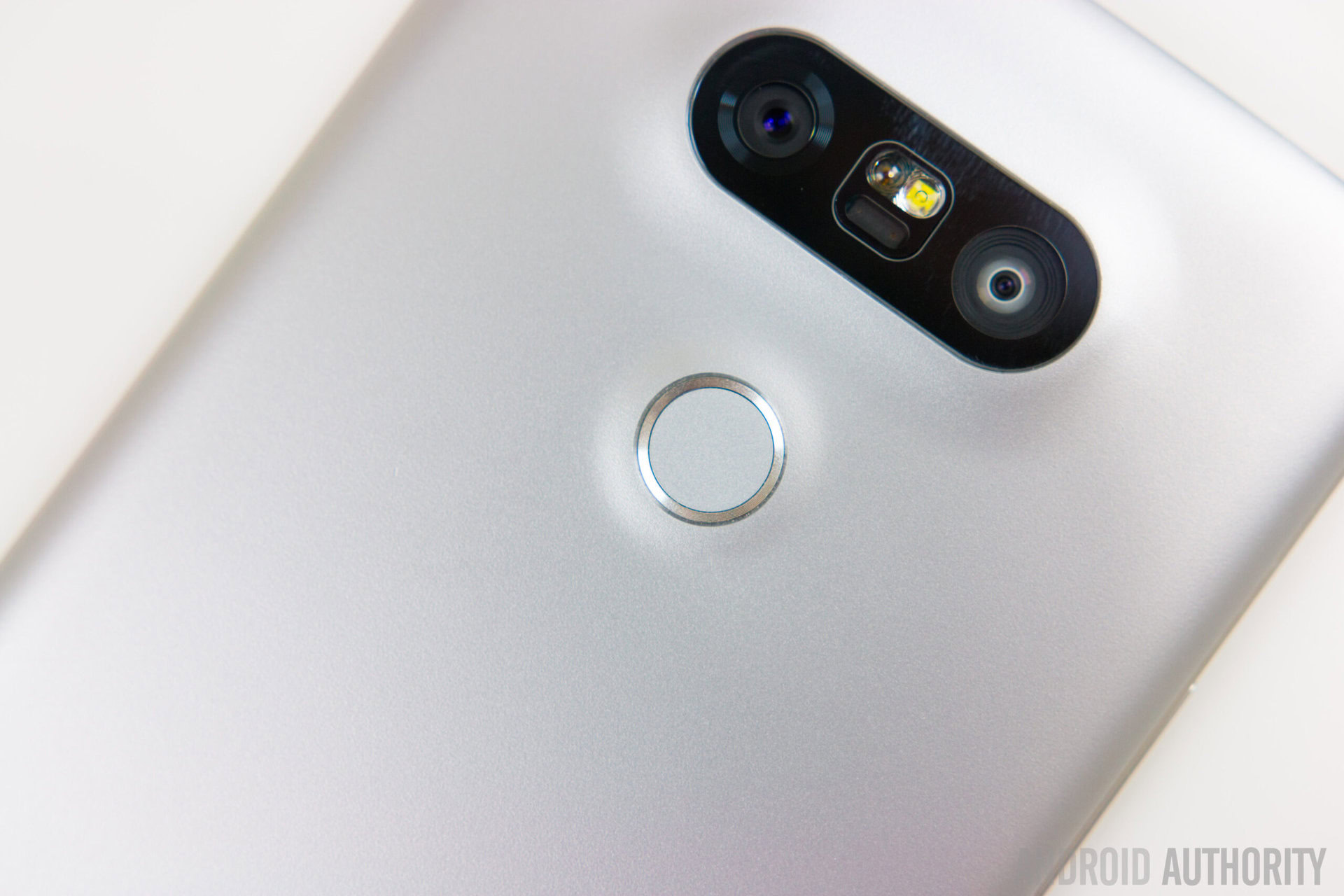
Traditionally, LG has offered a single camera array in its flagship devices, but last year’s LG V10 saw the company release a smartphone with two cameras on the front. Fast forward six months and the dual cameras have stuck around, although this time they’re on the back. The main, larger lens on the right is the 16MP sensor, which comes equipped with OIS and f/1.8 aperture which is likely to be used for most of your shots. The secondary, smaller lens on the left is an 8MP sensor with f/2.4 aperture and wide-angle 135° field of view.
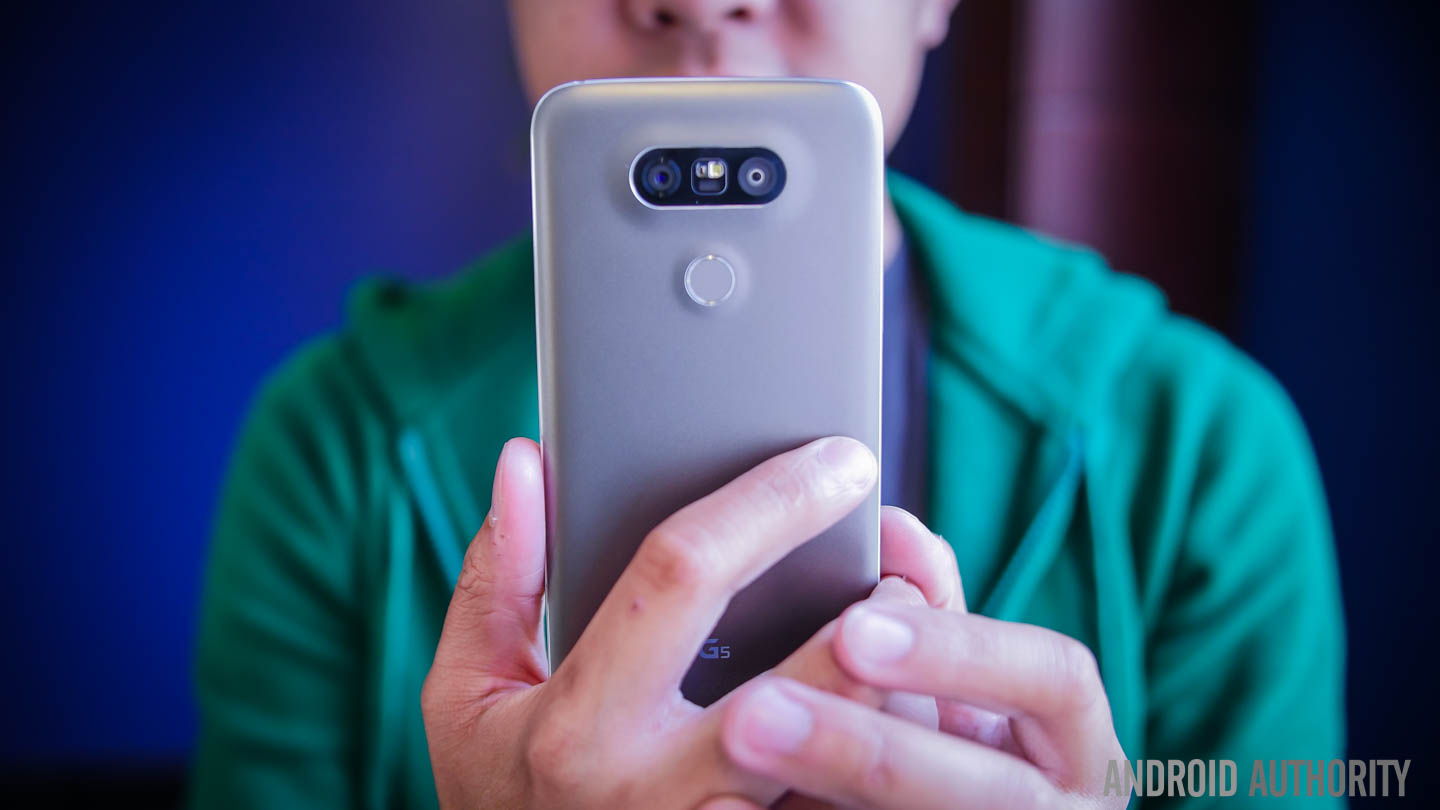
Both Lanh and I agree that the wide angle camera is the best thing on the LG G5 as it is capable of capturing excellent wide photos and it’s immediately obvious just how much of a difference there is between the two lenses. Both of us also agree that it’s the mode you’ll choose to you use more often than not as, even though the resolution is lower than the main lens, the pictures definitely tell a much larger story.
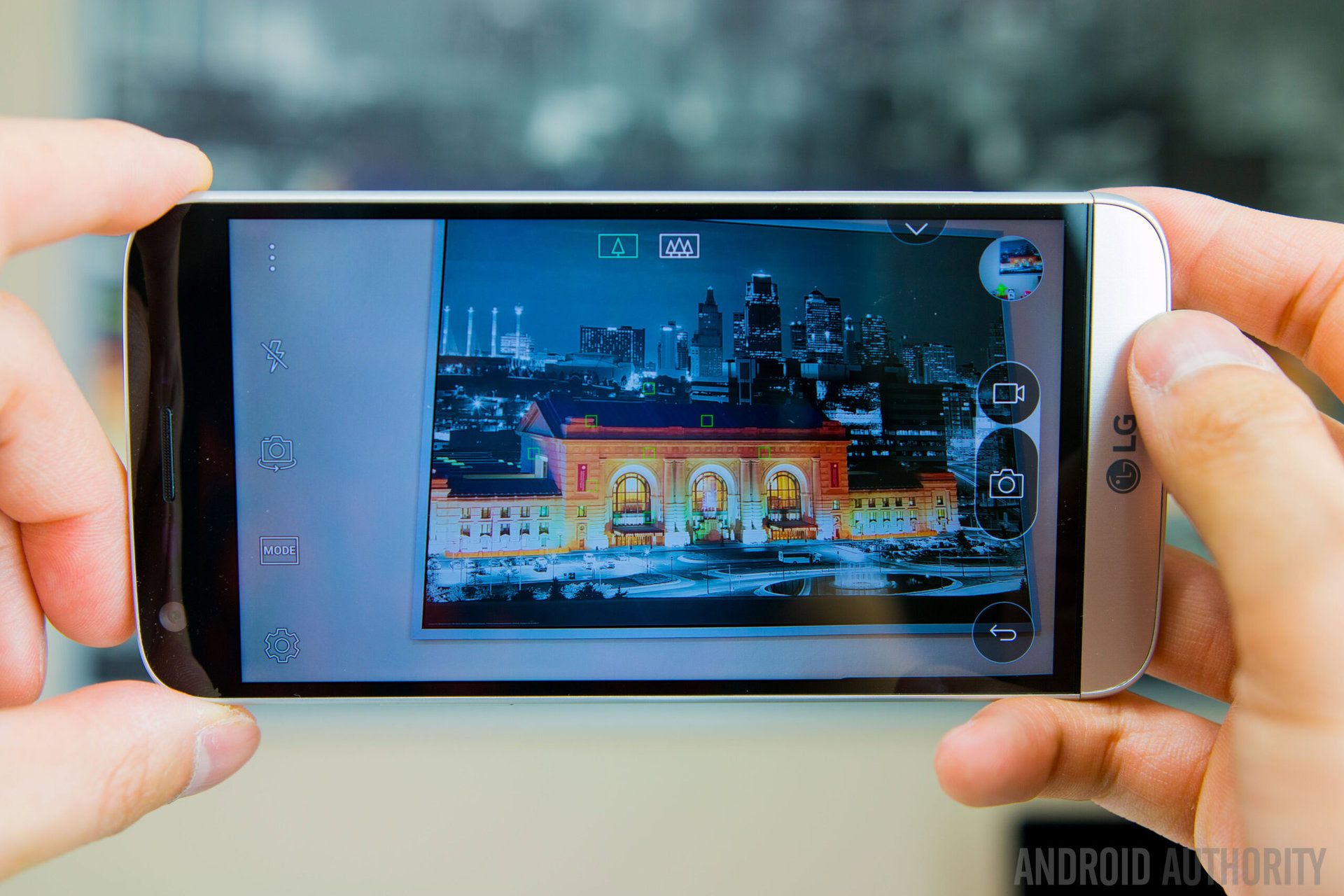
The camera UI hasn’t changed much from the G4 or the V10, save for the addition of two icons at the top of the interface, which allow you to switch between the two lenses. Alternatively, as you zoom in and out of a scene, the G5 will automatically switch between the lenses and reflect which lens is being used in the viewfinder.
Like past devices, the G5 comes with a range of preset modes to use when capturing a scene, and for the budding photographer, there’s an entire set of DSLR-like controls over settings such as white balance, ISO, and shutter speed. As the saying goes, if it isn’t broken, why fix it and LG was right to stick with its already-impressive camera app instead of trying to reinvent the wheel.
Picture-wise, the G5 delivers sharp images with excellent amounts of detail and, like past devices, the camera is definitely one of the best in the business. The color reproduction is pleasing to the eye and there doesn’t seem to be a lot of oversharpening. The camera does have a tendency to crush shadows in a lot of daytime shots, but using HDR mode quickly resolves this, and, thanks to the color spectrum sensor, you end up with very natural photos.

The G5 is also capable of really good bokeh in photos thanks to the f/1.8 aperture, which allows you to capture images at a shallow depth of field. As a result, you can take some fantastic macro and close up shots with the main lens. The secondary lens has a much larger f/2.4 aperture so you won’t be able to take quite as shallow images.

Low light performance is on par with most smartphones but it isn’t the best on the market. The G5 has a tendency to overexpose the highlights and there’s a noticeable amount of noise reduction, especially in shots captured at night. The G5 comes equipped with laser autofocus but this doesn’t really show in lowlight, where the camera can take longer than you’d expect to focus on a particular subject.

Up front, the G5 has a single 8MP selfie camera with f/2.0 aperture, which is capable of capturing pretty good selfie images in day or night. It’s not the best selfie camera on the market, but is more than capable of capturing those moments. The G5 also comes with a range of shooting modes, including multi-view, panorama, slo-mo and time-lapse.
All things considered, the camera on the LG G5 is more than adequate and at least on par with most current flagships. The experience is typical of LG devices of the past, and considering these were some of the best cameras of their time, we’re happy that LG stuck to its tried-and-tested setup.
Software
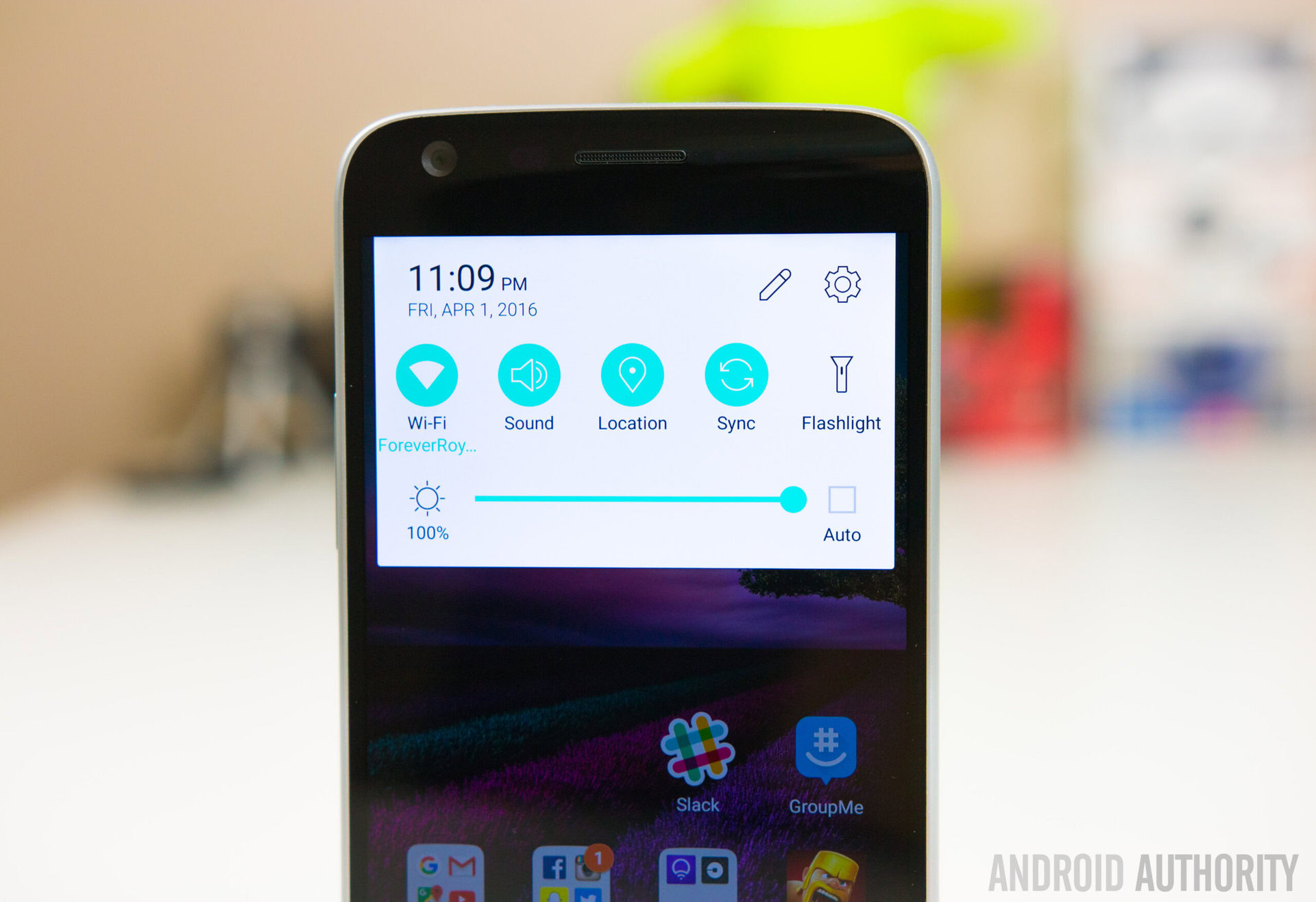
Now to what is arguably the most contentious part of the G5 experience: the software, and specifically, LG’s new User Experience. Running atop Android 6.0.1 Marshmallow, the new interface brings a heavily refined user experience, but lacks an app drawer. The new UX is radically different to past LG devices, but this is for the better, as the G5 sports what is probably the cleanest and least intrusive LG UI ever made.
Previous LG flagships had come with a lot of additional apps and features that proved to hinder the overall performance and detract from an otherwise-great experience. This year, LG has adopted the mantra that less is more and to great effect, with a decluttered and bloat-free experience delivering silky smooth transitions and excellent performance.
The entire interface appears to be well thought out and little tweaks like the white and light green colored accents in the notification shade and settings menu are nice little touches. By default, LG has kept the settings menu in 4 panels, but they have now included an option to revert back to a more traditional list view like stock Android. Like previous devices, LG has also made it really easy to customise the on screen navigation keys, as well as choose in which apps the on-screen keys are automatically hidden.
Many of LG’s features like the Smart Bulletin and Qslide apps are still present on the phone but they’re not quite as in-your-face as before, with things like Smart Bulletin turned off by default and tucked away inside the settings menu. LG has removed the dual window option from the G5, which is somewhat disappointing, but as Lanh attested to in the video, this is possibly because Android N will gain the feature natively and hence it will come to the G5 at a later date.
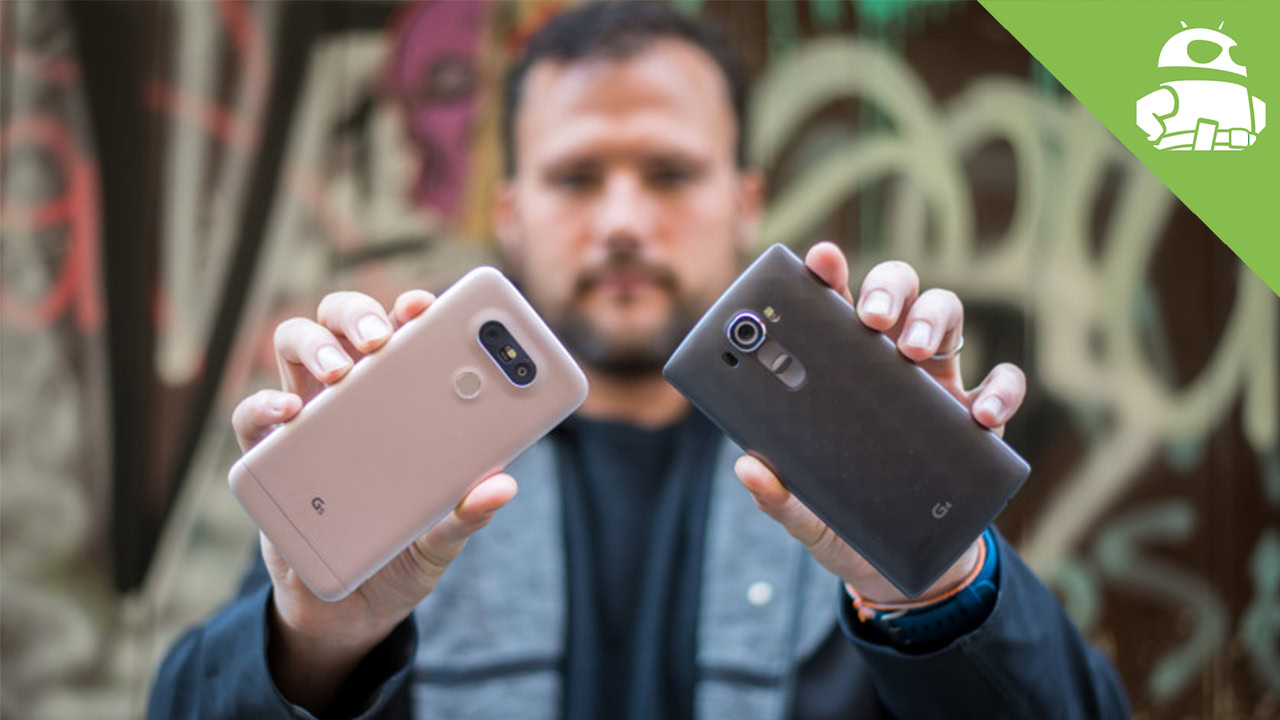
The biggest change to the software experience however, is the app drawer, or the lack of it should we say. LG has removed the app drawer in its latest launcher and as a result, it feels a lot more like iOS than Android. LG isn’t the first to go down the route of removing the app drawer, but if you’ve never used an Android phone without an app drawer, you will find the experience quite jarring at first.
LG has made its Home 4.0 launcher available as a download in their SmartWorld application, and this brings back the app drawer (alongside LG’s homescreen management of old). I personally found the G5 experience to be excruciating without the app drawer, but installing Home 4.0 (or an alternative launcher of your choosing) definitely fixes this problem. Personally, I find the Home 4.0 launcher quite pleasant to use, but also recommend Nova launcher for power users.
Overall, the LG G5 definitely brings with it a vast amount of changes to the software experience, and – lack of app drawer aside – the changes deliver the best LG software experience ever released on a smartphone. Given that LG’s interface was often the root cause of many performance-related issues on past LG smartphones, it’s nice to see that LG has delivered a truly flagship user experience.
Gallery
Specifications
| Display | 5.3-inch QHD display |
|---|---|
Processor | Qualcomm Snapdragon 820 |
RAM | 4GB RAM |
Storage | 32GB storage, with microSD for expansion |
Camera | Main cam: Standard lens 16MP with OIS, wide-angle 8MP Front cam: 8MP |
Connectivity | Wifi 802.11a/b/g/n/ac USB Type C, NFC, Bluetooth 4.2 |
Sensors | Rear mounted fingerprint scanner |
Battery | 2800mAh with quick charging via Type-C USB |
Software | Android 6.0 Marshmallow with LG UI |
Dimensions | 149.4 x 73.9 x 7.7mm |
Colors | Pink, Gold, Titan (Charcoal) and Silver |
Modules | LG Cam Plus & LG Hi-Fi Plus with B&O Play |
Pricing and final thoughts
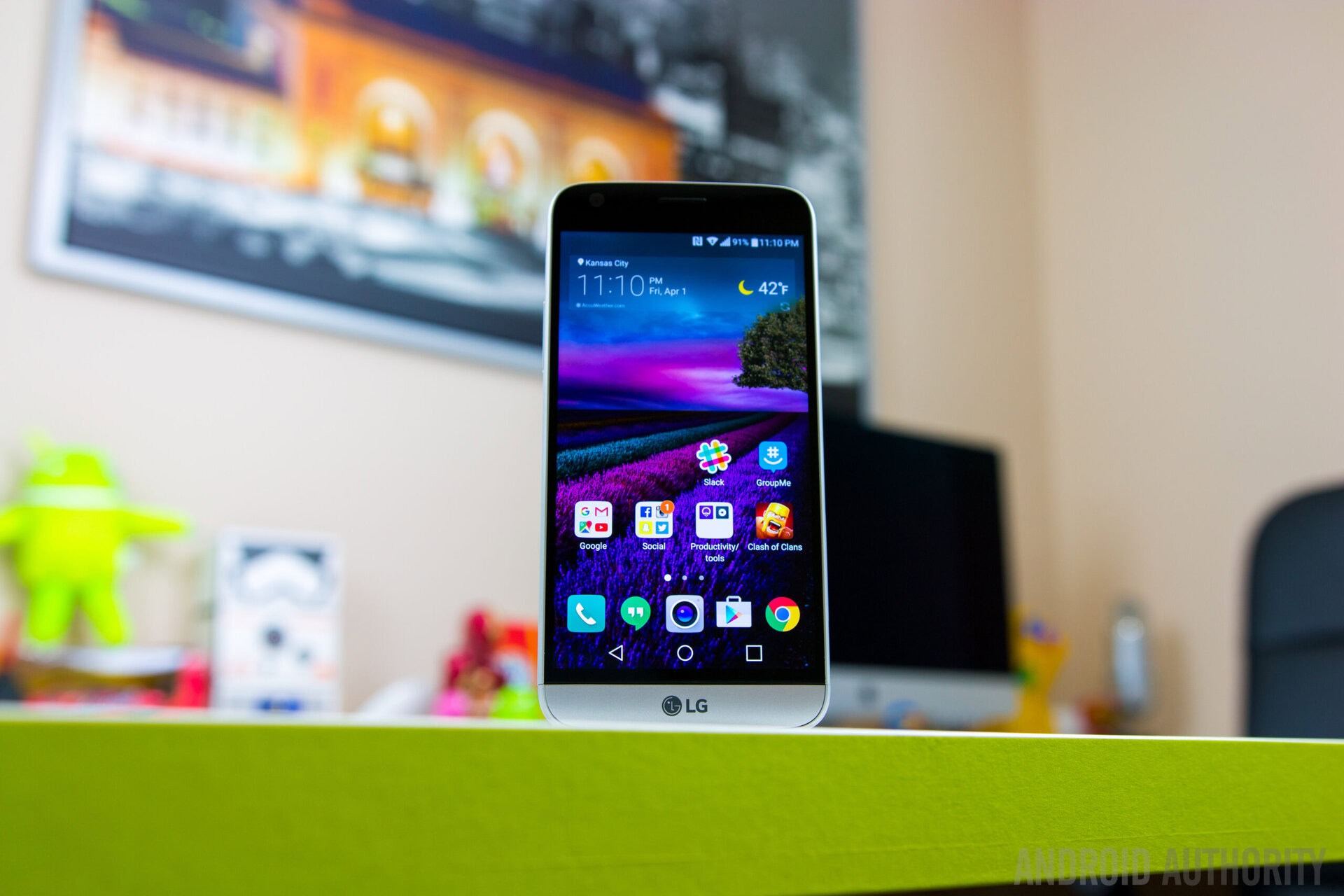
The LG G5 is set to cost $700 off contract in the USA, which is pretty typical for a flagship smartphone and the G5 is definitely on par with other flagships in the same price bracket. The G5 is a step in a completely new direction for LG and offers a brand new design, impressive dual camera array and premium software experience. At the same time, LG hasn’t quite perfected its design but for a first-generation product, the G5 has us extremely excited about what’s to come.
A smartphone that truly stands out from an otherwise-homogenous industry...
The modular capabilities make the G5 one of the most unique smartphones on the market, and while other manufacturers are focusing on making a good smartphone, LG has shown it isn’t afraid to dare to be different. As a result, the Korean OEM has a smartphone that truly stands out in an otherwise-homogenous market and this can only be a good thing for LG and for consumers.
With the new modular concept, it’s not just about what the G5 can do now but rather, what it’s capable of doing in the future, and that alone makes the LG G5 one very compelling smartphone.
Despite switching to an entirely new design and working with new materials, LG still stuck to its guns and delivered a metal unibody, complete with microSD card expansion and a removable battery. In doing so, the company has shown that it values the core features that its users love and will continue to offer them. There’s no denying that the overall experience isn’t quite as refined as a second-generation product like the Galaxy S7, but what is really intriguing about the LG G5 is that it will continue to evolve as a smartphone experience. With the new modular concept, it’s not just about what the G5 can do now but rather, what it’s capable of doing in the future, and that alone makes the LG G5 one very compelling smartphone.
What do you think of the LG G5 and are you planning to buy one? Is modular the way forward and has LG stolen a march on its key rivals by adopting a modular concept ahead of everyone else? Let us know your views in the comments below guys!